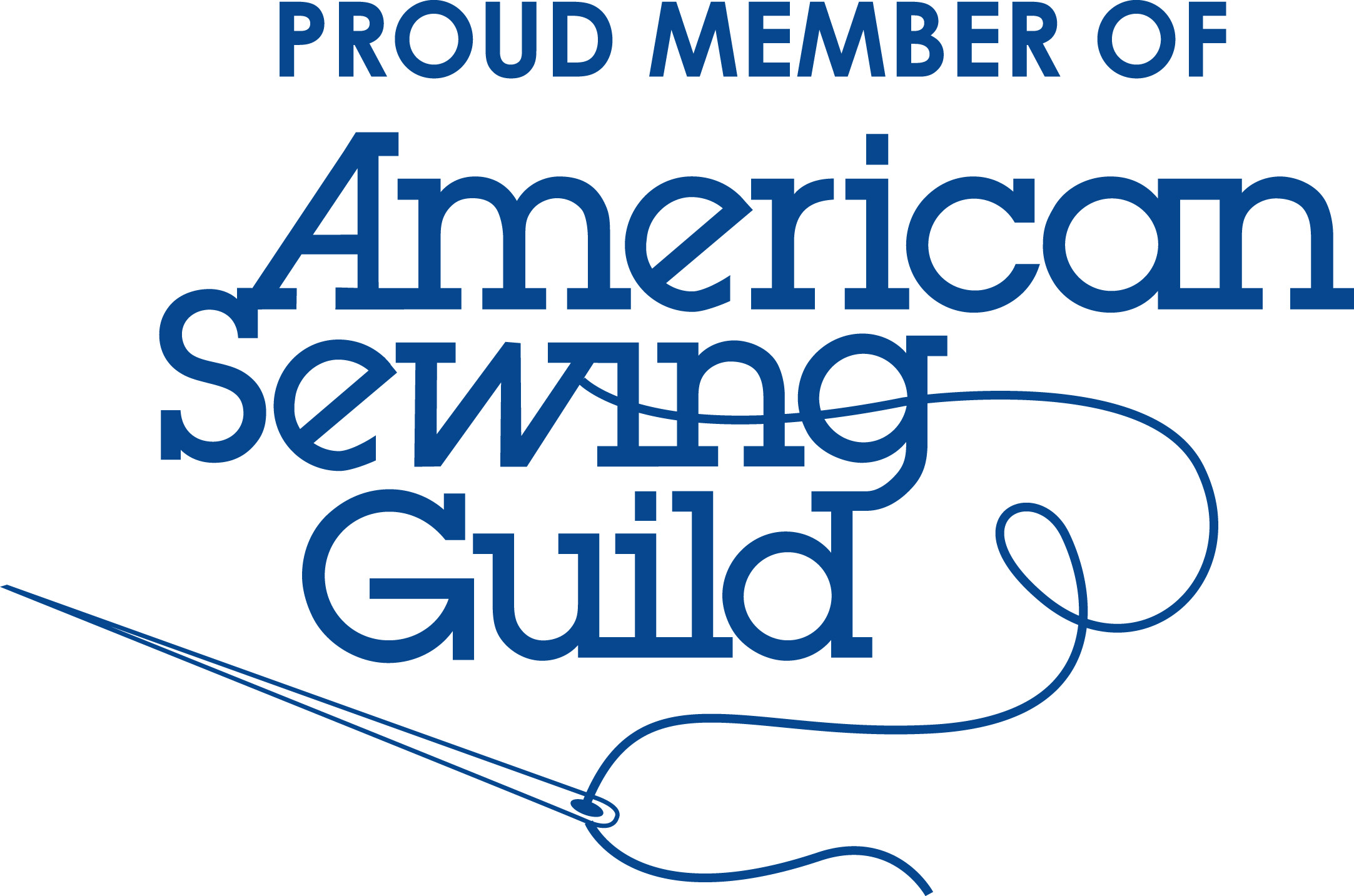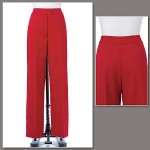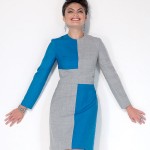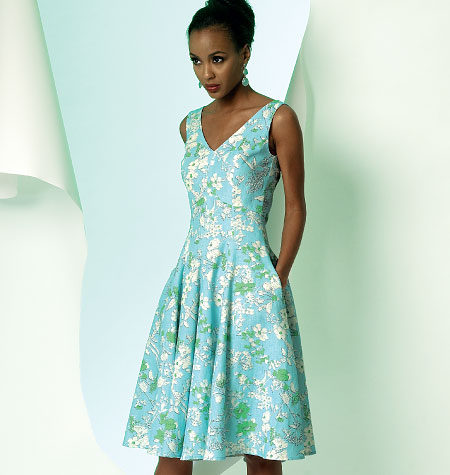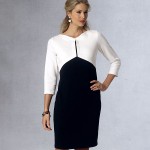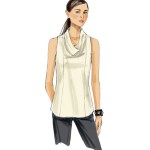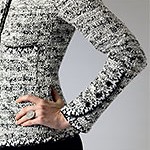McCalls 7119 Stretches Beyond Boundries
Hi there! I’m finally back and trying to get into the swing of things. Actually, I have been sort of in the production mode. Just converted about 70 lbs. of tomatoes into spaghetti sauce and salsa which I then canned. Last month I was able to can my spicy and dilly beans as well as my beloved Canadian Harmony peaches so I think we are almost ready for winter!
I’m healing up nicely, taking several days out each week for physical therapy but time, I think, is the biggest healer. Then there is the fashion show…the fashion show…what fashion show? Well, the one that I’ve been working for since this last February… it would be Portland Fashion Week. Nope, I’m not designing clothes to show at it, nor am I a runway model…they think I’m too short… HA! I’m an Amazon woman… in my mind! Actually, I’m a producer. I don’t do anything super glorious or thought provoking… and likely what I’ve done will never go down in history. BUT… it’s Portland Fashion Week, and I get to be one of the cogs that drives the wheels of fashion here in Oregon and that’s good enough for me!
Now it’s time however, to get back to work and start sewing! I’m starting a new project this month after I finish two that I’m almost done with but the one I want to talk about in this post is a dress that I made in July before I decided to wreck on a motorcycle! The fabric I chose for the project was what I used as an intro picture in my June post when I talked about my impressionist dress and this is it.
It was sort of a stretchy fabric, not much, but a little more than I anticipated. For my canvas, I decided it would be McCall’s 7119.
The pattern instructions called for wovens or stable knits and after much deliberation, I decided that my colorful sort-of-stretchy knit would be okay! After-the-fact, I’m happy with the outcome but I don’t think it was as stable as I thought. You’ll see in one of my pictures why I say this. Considering it all, I’m still happy with the dress. I had planned on wearing it this summer but it appears that summer is almost over so may have to wait until the next one comes around unless for some miraculous reason I find myself going to the Bahamas or something!
The pattern was easy to follow…from what I remember! June seems so long ago after everything that has happened. I do recall that trying to position the bodice back and bodice fronts onto the neck band was a little trying. I think I kept messing up which markings were for what because all I kept seeing was a lot of straps!
Here is a close up picture of the front. The left shoulder looks a little odd but it’s the way I have it lying on the table…oops!
This is the front showing where the slot is for the waist tie to pull through.
The bodice back. Once again, the placement of the left shoulder is weird!
In several of the pictures of me wearing it, you’ll get to see why I’m thinking that knits should be avoided. The front doesn’t reveal it, however… my posing, I think, was less than satisfactory! I just wasn’t feeling it. I was having a dumpy feeling day…most everyone understands what those are I think!?
This is the tell tale picture. Note that the waist seam is hanging below the tie. I didn’t notice until after the pictures nor did my daughter, the photographer! I think the bodice front and back, overall, pull down with the weight of the skirt which I didn’t expect.
Of course the dress is full length with a little extra on the back hem.
I think the remedy for the tie sitting on the waistline is to drop it a bit before tying it into a knot but if I’m on a tropical beach…who cares! Right!?
There are various ways the ties can be wrapped and knotted but for this photoshoot moment and because I was pressed for time, this is what I did.
Despite this dress stretching beyond boundaries, I like it! I’m thinking though that it might be nice to make another in a street length because it is so comfortable. But…first I have to find just the right fabric!
Have a great rest of the summer since it’s not officially over until September 21!
À la vôtre! Jessica
Read MoreBlouse in Silk plus Vigoss Skinny Jeans Renewed
My Wisteria is blossoming!
There is so much I want to share and I’m not sure just where to start. I try so hard to not write monster blogs. I’ll do my best to try and keep it minimal. But I’m drinking wine while I do this so I really can’t make any promises! With the absolutely beautiful weather we are having, it seemed such a nice idea to sit on the patio, sip Chardonnay and write to you.
OKay… so… let’s start with the blouse that I designed, drafted and made in some inexpensive fabric that I posted about a while back. I was inspired by a blouse that Emily VanCamp wore on the TV show, Revenge. I can’t believe I’m still watching it… I hate TV because of all the commercials! It’s Netflix’s fault because that’s where I got hooked on it! No rant, promise! Anyways, there were a few discrepancies when it was finished, but overall I was happy with it. After putting it on the back burner for a bit to work on Vogue 8972 dress project, I decided to go back at it so that’s where I’ll dive in.
Here is a picture of it and if you want, you can go here to read more about it..
 There were a few things that I needed to change.
There were a few things that I needed to change.
1) The front was a little shorter than I wanted. When I extended it in length on my pattern, I also had to redraw the back at the side seams to match the front side seams but that was pretty simple.
2) The pleats were in sort of weird positions when I had to apply the neck yoke so I moved them more towards the side and away from center.
3) Instead of a 1 inch neck yoke, I reduced it to 3/4 inch. Not sure if I like it the way it is now or better when it was an inch wide, but…it’s just a minor detail, nothing to get excited about. (still not super happy with how the yoke lays around the neck but that just may be the way I am sewing it on)
4) The last two changes were lowering the front and back neck lines, 1/4 inch for the front and 1/2 inch for the back.
So this time when I made it up, I used some cream silk Crepe De Chine that I had. I love sewing with silk because it feels so luscious! And it feels so nice to wear, though I did discover that it’s still pretty shear. Will wear a cami under it unless I feel really bold on a night out with the girls! Woo hoo!
Haute Couture fascinates me, so while I was making this top, I decided to pretend I was a famous fashion designer, sewer kind of person (I think the wine is starting to kick in! :P) and have some fun. I used tailor tacking to mark my pleats. It was still a bit of a challenge to get all the folds equal, and running evenly straight from top to bottom but I managed.
I took these pictures to show you what they look like. If you look at the picture on the right, it’s a closer view. For those that aren’t sure how to do this I’ll try to briefly explain.
I insert my sewing needle downward (like I am sewing) about 1/8 alongside the center point (this can be whatever side you want to start at) and then push the needle back up through the center point, then I push the needle back down through the center point again, and bring it back up about 1/8 inch away from the center opposite from where you started. Through this process, from the start when I first pull my thread through, I leave several inches at the end where I started, a big loop at the center and leave several inches at the end where I finished. (see the picture above on the right)
When you have finished, you pull the pattern tissue/paper away. Most of the time the tissue just slips off unless it hangs up at the center point where you stitched in and out. When this is done, you then have to clip the thread that lies between the two sides of cut fabric pieces, leaving equal parts of thread for each side.
So when it was time for me to make my pleats (on the outside), I used these tailor tacks for my guides.
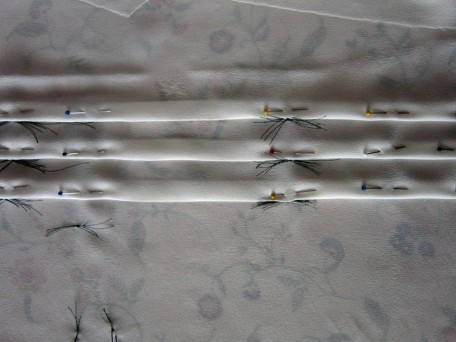 The tacks under the pleats are for the dart.
The tacks under the pleats are for the dart.
A Hong Kong finish on the seams was my first plan but I didn’t have any silk organza on-hand so I ended up using my pinking shears on the seam allowances. I did finish my armholes with bias I cut from my Crepe De Chine and then used my 1/2 inch Daisy Bias Tape maker. Silk looks so smooth so I didn’t want to use any top-stitching in my construction. This meant a lot of hand sewing but hey, I’m a famous designer sewer person and I do like to hand sew so this worked out just fine.
My silk bias tape turned out very nice… thank goodness!
Covered buttons look so elegant so this was also a feature that I wanted to include in my silk blouse. They are not hard to do. You can buy the metal buttons and the tool to make them. Here’s how it works.
1) First, you have to cut out circles of fabric. The package that the buttons come in has a template. They don’t have to be perfect, just large enough to cover the round metal cap. I did a double layer because the Crepe De Chine was too sheer.
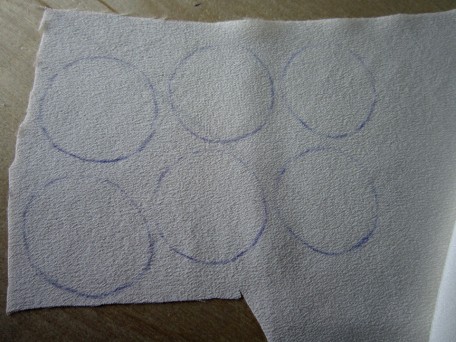 One of my circles looks a little oval. I was not drinking wine at the time!
One of my circles looks a little oval. I was not drinking wine at the time!
2) You gather up all your widgets. The metal button dome and matching back, the blue pusher and white mold tools that you can purchase in a package from most sewing stores including JoAnn Fabric. My sewing machine fuzz remover is my tucking weapon! You’ll see in a minute.
I used the #20 which is 1/2 inch.
3) Next – Center the white mold over your fabric. You’ll probably figure out your own technique for doing this. I’m just trying to explain this in steps so bear with me.
4) Now flip it over and place the dome part of the button, top down over the top of the fabric.
5) With the fabric sandwiched between the mold and the button top, now push the metal button top down into the mold.
6) Here is where my fancy fuzz tool comes in. Oh… and my circles of fabric are larger than they need to be. Yes, there is a template and I could have cut out the exact size from my fabric but this is where things can go bad. The exact template size j-u-s-t fits and if the circles aren’t perfect and if everything is not centered, then it’s a bomb! I purposefully cut the circles larger to see what I could get a way with. With the non-fuzz removing end, I tuck in all the fabric as neatly and smoothly as I can.
7) The button bottom is now placed with the flat end down over the folded fabric.
8) While holding everything in place, you take the blue pusher and place it with the opening over the top of the hook part of the button bottom and then squeeze it and the white mold together.
9) When you are done squeezing, then comes the moment of truth… did it work. This is how it feels to me almost every time!
Voila! Silk covered buttons. If I was really going all out Haute couture,
I would have also covered the button bottoms.
Here are all my finished buttons with several extra if one comes apart or I lose one!
Here they are sewn onto my blouse.
Oh yes, and I also hand bound all my button holes. They are not too bad, but with practice I know I can get better!
The front of the blouse with all the pleats…
Well I think I’ve written a monster, but… it’s all for you! With that I’m going to just keep on going because the next part is the cool part! At least I think it is!
Remember the title of this post that included Vigoss Skinny Jeans Renewed. Well… I purchased a pair last year, several pair in fact. Getting skinny jeans that fit me is tricky business. In order to get them over my thighs, I have to get a slightly larger waist. On one particular occasion, I decided to buy a pair in a waist size that fit so I wouldn’t have to wear a belt. I proudly wore them shopping for the first time a few weeks later and the legs were so too tight that as I walked, they would pull down. It was awful! My coolness that day melted into a day of hell! My first thought when I got home was to hurk them in the garbage. Then I thought, maybe I can fix them to somehow fit me so I tossed them in the “later days” project pile and forgot about them! Then, last month at the American Sewing Guild garment lunch bunch group meeting, one lady who I so adore, Lottie, suggested we do a sewing challenge. Different ideas were tossed around but I think what was most important was that we try to remake, or renew something showing our creative side. I went home and pondered this while digging through the “later days” pile and there they were, those evil skinny jeans! I knew what I was going to do… I was going to make a skirt out of them.
I took out the inseams first. Then I calculated how long I wanted the skirt to be including the hem, then cut off the legs! Served them right! There was now missing fabric in the center of the front and back shaped like triangles. Using pieces of tracing paper that I laid under the edges, I drew these shapes. Then I added an inch on the two sides for my seam allowances. and used them as pattern pieces. After removing the inseams from those evil skinny legs, I played with my pattern pieces until I figured out how I wanted them to look. I decided to stay on the side of caution and only cut out the back side first because it was the larger section and I wanted room for error. It took several tries on both sides until I got the fit I wanted but it wasn’t much trouble. I think the hardest part was sewing in the tip of the triangle on the top because I was sewing through the felled seam on the jeans. It’s all experimental so you just have to go with the flow.
Here is my new skirt on the inside and the template.
On the outside. I top-stitched along the two sides of the triangle at 1/4 inch.
Close-up of the V
And the back on the inside…
And on the outside…
Well, there it is! My very own silk blouse and newly invented Vigoss skirt! It took me a trip around Africa to explain it all but there are so many things that I wanted to share with you and by golly I did it! Take care and will be back soon!
Salute! Jessica
Read More
Technical Difficulties
I”m writing this quick note to let you know that Sewlikeinparis has been down for almost a week due to Web Hosting technical difficulties. It seems even web hosting services can have drive failures! All is well though, nothing lost or misplaced and we are back on line for your amusement, entertainment, interest, or just because you like to visit!
Salute! Jessica
Read MoreDesigning a New Top
Useful Tools for Flat Pattern Design… Except one item missing… TAPE!
For several years before the last several years, before our economy blew up, clothes in stores, blouses in particular, had style! They were made from fairly good quality fabrics in stunning patterns and beautiful colors and were just plain fun! AND… during that time, it was more tempting to buy than sew, especially when you fell in love with something and wanted to take it home and wear it immediately! Okay… so the cat is out of the bag… Yes, I think I bought more than I sewed! There! I said it! I was sew lazy! Now days though, when I get that wee little urge to go out for a little sneak peek, all I see on the racks is, for lack of a better word, garbage! It seems there are more cheap ugly clothes than ever! You know what this means don’t you?!! Yep… it’s time to do some serious blouse sewing!
I have an assortment of top/blouse patterns in different styles, a few I have attempted to make but…so far, none that really fit me properly. I can’t hold the pattern makers responsible because it is the same problem when I buy Ready-to-Wear blouses. In either case, blouses are a little too roomy in the shoulders and if they do fit in the shoulders, they are not quite roomy enough at the waist. My only explanation… I am shaped like a triangle! I long ago accepted this fate in life but am growing tired of the fitting battle so I decided to strap on the big guns and take on the challenge of making my own blouse pattern(s).
Okay… so for my first blouse design, my inspiration came from something I saw Emily VanCamp wear on Revenge about a month ago. Yes… I’m still watching that stupid show! She wore a cream colored blouse that looked to me to be made of Crepe de Chine but of course that’s just a guess. Anyways, after stewing on it a bit, I grabbed my clip board with pages of ready to use croquis and started sketching. Eventually this is what I ended up.
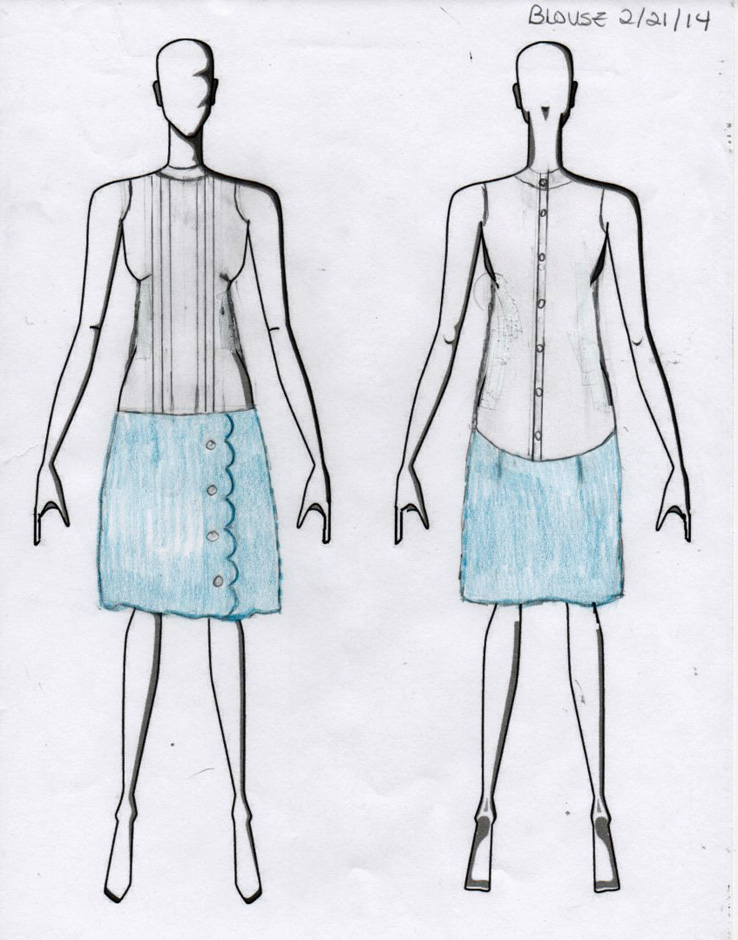 Yes, there was a bit of skirt thinking going on too!
Yes, there was a bit of skirt thinking going on too!
Obviously I am not the greatest at fashion drawing on croquis but it works for me and that’s what matters! After dwelling on this drawing for a bit, I went to work. I started off with a basic bodice block that I drafted last year using Connie Amaden-Crawford’s book, “Patternmaking Made Easy” (The book on Connie’s site is the 3rd edition whereas mine is the 2nd so the front cover picture is different).
My bodice block has waist darts on both the front and back and a side dart on the front. They come in handy time and time again when I am fitting patterns that have similar bodices. Not sure why I added the 5/8 inch seam allowances to them when I originally drafted them. It was a learning curve at the time! Sheesh… it’s still a learning curve! I should say it now… my pictures for this post are a bit lacking and I’m sorry about that. It’s hard taking pictures of paper! Next time maybe I should do mini’s.
Anyhoos, the next two pictures are my basic bodice block, front and back (oops! I’ve got fold wrinkles – sorry about that!)
My initial idea was to use this basic bodice block to create a dart-less blouse block, aided by my book “Patternmaking Made Easy”. I spent two days drawing, measuring, ERASING, drawing more, cutting, wadding paper into balls, then taping and drawing again… and when I thought I had it, made a muslin. It was after trying it on at least five times after at least five different MAJOR adjustments, I contemplated taking it down to the fire pit in the back yard and setting it ablaze, then filling my wine glass extra full and playing games on my computer! “Defeat” is hard for me to accept though so instead of resorting to fire, I dumped the dart-less idea and started over.
Here’s how I created my Darted Blouse Block
1 ) Using tracing paper and my basic bodice blocks, I begin again to trace, only this time the front side dart at the bust line got to stay. The waist darts in front and back became non-existent.
2) For the front, I continued drawing the center front line downward from the waist line adding another 7 inches of length. I wanted the back longer than the front so I extended the center back line down from the waist an additional 11 inches. However, before I could draw in side seams, I had to determine just how wide my hem line would be.
3) I calculated the width I needed for the front and back hem-line. (hip measurement + ease ÷ by 2, then ÷ by 2 again because the flat pattern is 1/4 of the measurement amount. After doing these calculations, I subtracted 1/2″ from the second calculation, and used this final figure for the front but added 1/2″ to the same second calculation, using this final figure for the back which is “butt” a little fuller than the front. 🙂
Example: Hip 37 inches. I added enough ease for a drapey look which I guesstimated to be of about 5 inches: 37 “+ 5″ = 42”
42″ ÷ 2 = 21″ (width for front and back)
21″ ÷ 2 = 10 1/2″ (width for flat pattern front and back pieces)
Now, move 1/2 inch to the back: 10 1/2″ + 1/2″ = 11″
The front: 10 1/2″ – 1/2″ = 10″
** Note that 11″ + 10″ = 21″ x 2 equals the 42″ we started with.
4) Using the above calculations, I then drew in the hem lines for the front and back. An L-square metal ruler (shown in the picture at the beginning of this post) is really helpful for doing this. You place the ruler with an edge on the center front or center back with the other end extending along where you need to draw the hem line.
5) To create side seam lines for the front and back, I drew lines that angled out from the waist to the hem line. We are not really boxy or straight edged so I then did a little curving and blending so that the side seam lines looked more like a body shape! When done, I double checked to make sure that the front and back side seam lengths were equal to one another.
Well here is my new drafted blouse blocks. I went ahead and added seam allowances since I’m almost ready for production. I decided to go with 3/8″ so I wouldn’t have to do trimming.
It’s hard to see in the 2 pictures above, but there are a number of features that I included on my front and back blocks because of some styling features I wanted to achieve.
1) Yokes: There are yokes drawn in, on both the front and back blouse blocks. I made them 1 inch in width and drew them in before I added seam allowances. I did this by drawing a line 1 inch down and along each of the the block necklines. In order to create yoke pattern pieces, I then traced the yokes I drew in and added 3/8″ seam allowances. Word of warning. Make sure they are equal widths all the way around! My first pieces I cut from my fashion fabric were off and after I sewed them on and thought I was finished, I noticed some major discrepancies! Yuck! I had to take them off and make new ones.
** Note 2: The yokes are just the upper part or neckline section of my blouse blocks so in order for me to create the style I wanted, I needed to trace the blocks again and exclude the yoke sections but remembering to include a seam allowance.
2) Center back button/buttonhole extension: At the center back, I added 1 and 5/8 inches that is a combined facing unit and button/buttonhole extension.
To break it down: I drew a new line 5/8″ further out from the center back line that runs parallel from neck to hem line. This added amount will accommodate the buttons and buttonholes. Then parallel to this line I drew an additional line 1 ” away from it. This 1 inch section is the facing unit. It contains a 5/8″ facing and 3/8″ for a clean finish.
How it works: In order to keep all things equal, I first basted a 3/8 and 5/8″ seam on each back side. (the picture below is the left side – the pin in the shoulder tells me that this is the right side of the fabric)
I next turned under the 3/8″ section and pressed it. Then I did the same for the 5/8″ section. Now I was ready to sew the final seams. I laid each back side right-side up, and stitched a 5/8″ seam using the guide on my sewing machine. Fortunately I caught the folded-under edge all the way down! You could also edge stitch on the underneath which I often do so I don’t have to worry about not catch the folded edge, but because the fabric I was using for my prototype was so slippery and showed every uneven thing I did, I decided to do what I did. Below is a picture of the underside but unfortunately it’s not the match to the left side shown above. This is the inside of the right side instead of the left. Damn it I hate it when I do that!
3) Creating my pleats (tucks): There are 3 straight lines drawn in on my front blouse block that run from the neckline to the hem line and are parallel to center front. They are for the creating of tucks (Page 173 of “Patternmaking Made Easy”) or what I call pleats. The bust level line is on perfect crossgrain so once again, with the aid of a metal L-square ruler, I used this point and the center front to make my markings for my pleat lines. Since cutting up the block is the next step, I decided to first trace an additional front blouse block that included the 3 lines for pleats and then let the cutting commence! Mind you I have now done this twice! Once for the actual creation of my pattern and the other to be able to show you how I did it! On the positive side… I’m getting faster at it!
So when I was done tracing, I next had to cut along each of the 3 lines, separating the sections completely from one another. Here’s what it looks like.
Now I have 4 sections but there are only going to be 3 pleats. You can choose whatever width you want… it could have been 1/8, or 1/4, 3/8 or 1/2″ but I decided I wanted 1 inch. The ruler in the picture is there to show you how it looks when I place my sections 1″ apart for my pleats. (my picture is not square so my strips don’t look square!)
The above picture is for explaining… you actually take the strips and position them the width you want, onto a piece of paper that fills in the gaps and enough room at the top so that you can fold, and draw in the finished look of the pleats. Here is a picture though once again, it may look uneven but after the many times I folded the paper in order to draw in the top of the pleats and all the tape that was involved, I couldn’t get it to lie very flat!
For the real deal, here’s what it looked like during construction! By the way, I messed up several times when trying to decide how I wanted to fold my pleats (tucks) and so had to pull all the threads out. With no instructions you are free to do what you want, but this is when the accidents occur! It’s a wonder that my blouse went together at all by the end.
Now is the moment of truth… here is the front
And here is the back…
My handy camera crew are both sick and tired so not able to help me with a photoshoot so I couldn’t model it for you! Yes, it turned out and I will wear it but it does have flaws. My front and back yokes were even but they don’t lie as nicely as I had hoped. It probably didn’t help that I pretty much mangulated the neck line while trying to figure out how to do my pleats and resewed the yoke on about 3 times! I also ended up with the front being shorter than I thought it was going to be. It’s just long enough but I like it longer than just enough. I will probably layer with a red cami which will make things interesting. As I look at these last 2 pictures, I realize that I didn’t say anything about the armholes and how I finished them. It was pretty easy… 3/8″ seams and bias tape that I made from the same fabric using my Clover Bias Tape Maker, only I folded it to the outside.
This is a monster of a post which I know is a pain to read and I am sorry about that. But hey… it was a pain to write! Whew! Right now it’s totally Wine:30! And time for a piece of cake too! I am truly happy though, that I could share this with you and hope it helps someone! Sew until next post…
Salute! Jessica
Read MoreWolf Dress Form Draping
This is Elizabeth. Yes, I am referring to my dress form in the picture above. She is not vintage, but she is a bit aged, about 17 years to be exact. We have collaborated together for many many projects over the years, never fighting or arguing… and she has patiently stood for hours while I repeatedly shove pins in her, never complaining. I know she would be crushed if she knew I have been working with another dress form! The dress form is a size 8, has long slender legs and her name is “Wolfee” (my pet name for her).
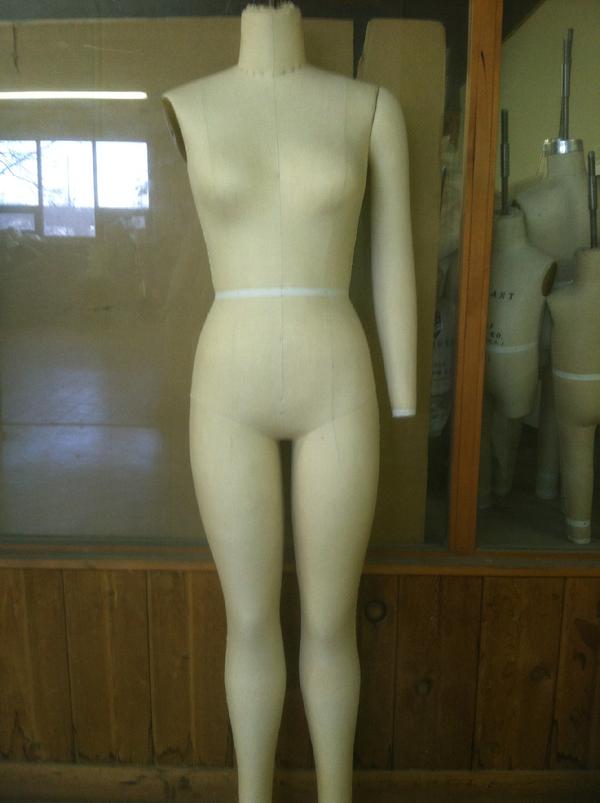 This photo is from Wolf Form Company, Inc. web site.
This photo is from Wolf Form Company, Inc. web site.
“Wolfee” and I have been working together in my draping classes. She was assigned to me the beginning of the first class and we will be working together till the end. I have learned that Wolfee’s kind is considered the industry standard for dress forms, meaning of course that they are considered the best. I can buy a sister of Wolfee for $1600 from the Wolf Form Company, Inc. , or the traditional straight skirt dress form for $825 (below).
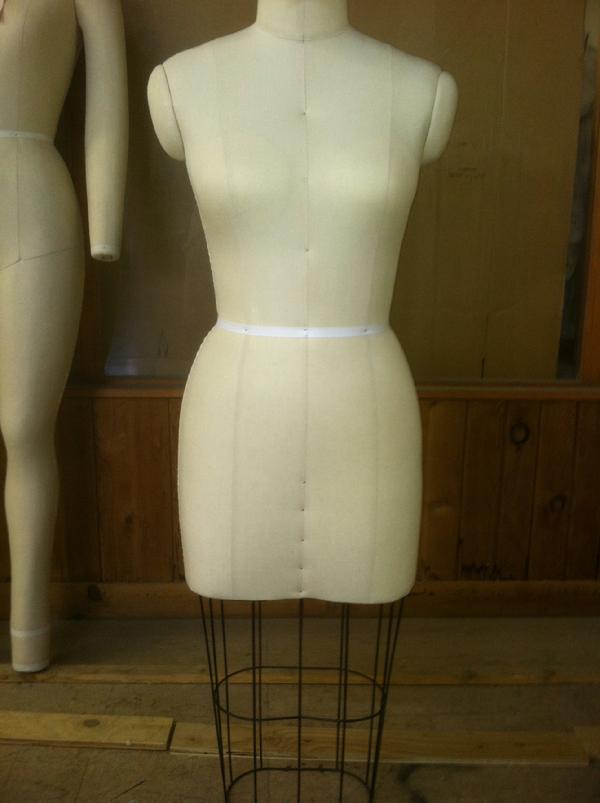 This photo is from Wolf Form Company, Inc. web site.
This photo is from Wolf Form Company, Inc. web site.
Yes, they are expensive and so unfortunately I may never have the luxury to own one but you just never know! See…I told you Elizabeth would be really upset if she knew.
So how are my draping classes going? Well, up to this point they have been incredible! We have draped a bodice, skirt, circle skirt and a princess seam dress. And… as usual, I have managed to get myself into a challenge project. I am not sure how this exactly happens. My best explanation is that I am sort of a visionary that can’t keep my imaginative ideas quietly to myself! I certainly can’t turn down a challenge; sometimes I think they are the reason for my existence. The challenge… making a dress for myself out of the princess seam dress that I draped and wearing it to my next draping class. Mind you the draping classes were split into two sessions of classes, Draping 101 and Draping 401 with a 3 week interval between…thank goodness for the 3 week interval! The 401 starts in four days from now so yes, I have been working hard on making the dress!
Okay, so last Tuesday my daughter and I hit one of my favorite fabric stores in search of challenge dress fabric and guess what? Oh yes, we found fabric for my dress but Calley found fabric for hers too, specifically the McCall’s 6561 pattern with the 10 piece bodice and the tons of gathering.! Yep – I am going to be doing more sewing for my beloved pencil!
This is the fabric and trim for my princess seamed summer dress.
It is a fine cotton in a pastel green with embroidered soft pink polka-dots. The trim is little pink daisies in glossy thread. I am trying to steer clear of the dots but the colors were exactly what I was looking for so I just had to!
And this is the fabric for Calley’s dress. It is called shimmer satin and I am truly excited to sew it, the fabric feels luxurious!
So I guess I have a lot of sewing to do. What’s really crazy is that I am already thinking about other projects that I can’t wait to dive into! My son, Jared, really wants shirts! Shirts made by me! You will definitely hear all about it when I get there but for now, I guess I better sign off. It’s Monday, Memorial Day, and time to reflect with a glass of Chardonnay!
Salute! Jessica
Read MoreDrafting a Peg-Top Waist Skirt
We are having such beautiful weather and to think that it is Oregon, and in April! I have had more energy in the last 3 days than I feel I’ve had in the last 3 months. I guess I’ve got the “spring fever”.
So while cleaning, cleaning, and cleaning…
I have been thinking about a dress I am going to make, a summer dress in yellow and white. Part of my inspiration came from the T.V. show “Revenge”. Yes…I am watching it but I blame it on Netflix. Believe it or not, I don’t watch television. I do however watch my “talking books” on Netflix but it really stinks when they put the first season of something on it; you watch it, and then you’re hooked and have to continue watching it on T.V. or Comcast On-Demand, both with all those obnoxious irritating crappy advertisements… uh-oh, rant coming on, shut it down- shut it down! Ahem…
Anyways, there were several dresses that the leading actress, Emily VanCamp, wore that caught my eye. One of course was a yellow and white one, and the other was what might have been a white brocade but it was the skirt of that dress that grabbed my attention. Instead of the standard darts that start at the waist and go straight down, these were diagonal. I thought, okay, that would be easy enough — I’ll just use my skirt pattern that fits me perfectly and fold the darts diagonally. But I was so wrong! Mind you I had already drawn out my vision on a croquis…
and have been mulling it around in my head, trying to figure it all out. It was in one of those moments when my brain was fully functioning properly that I remembered a book I have. The author is Adele P. Margolis and the book is titled “How to Design Your Own Dress Patterns”.
The diagonal darts that I needed to create she terms in the book as a “peg top” skirt with actual instructions for drafting it. What a score!
I was so excited that I
stopped breathing for several
seconds…
This was so big that it
demanded a glass of wine with
a toast!
So now that I am back on my feet, I thought I would share with you how it’s done. There are 12 steps to drafting the peg-top skirt and hopefully with pictures, some from Adele Margolis’s wonderful book, it will be easy for you to follow. Here goes…
DRAFTING A PEG TOP WAIST SKIRT in 12 EASY STEPS
** Please note that my pictures and the book illustrations are opposite views. I did this intentionally but realized half-way through that it would be conflicting for this “how to” but I had already spent a bit of time with the drafting and pictures so decided to keep my dingy sailing in the same direction!
This is the whole sha-bang of illustrations for the peg-top skirt, all on one page. I have re-illustrated them individually in the following steps to make it easier to understand. Hopefully you will be inspired to go hunting for this little treasure to add to your collection if you don’t already have it. It certainly has saved my butt!
Step 1:
You start with a skirt front block that fits you nicely but because you’ll be cutting it up, you will likely want to trace one from your original. I traced around my original skirt block onto a piece of art paper and then drew in the dart and grain line. Keep it simple and do what works best for you.
Step 2:
Draw a line from the bottom corner of the side seam to the dart point. Then label these B and A respectively. (See above and below)
Step 3:
Cut out the original dart at the top of the waist. There is no picture for this because for some reason I forgot to take one. (It was an awe crap moment when I realized this)
Now you are going to slash the line you drew from Point B to Point A but leave just a smidgeon of paper at Point A so the 2 sections are still connected. Then pivot or shift Point B, closing up the dart at the waist; then tape in place. Label the hem line points B (already there) and B1.
By pivoting, the dart control was shifted from the original dart to the hem line.
Step 5:
You will need to draw “style lines” as shown and label them X and Y
This is a bit tricky. There is no precise placement for these lines and no specific lengths. It is entirely up to the designer. I worked from the sample that is shown in the book and drew my lines 4 and 6 inches in length.
Step 6:
Next, connect each of these lines to A.
Step 7:
Label these sections 1, 2 and 3. Then cut them completely apart from one another. Across from A, you will want to mark A1 though not shown in the photo below.
The next steps I found to be easier to manage by placing my 3 sections on another sheet of paper. There were no instructions given to do this and I struggled for a bit until I got it sorted out.
Step 8:
You start with placing sections 1 and 3 with the bottom points B and B1 touching and positioning A and A1 two inches apart. Below is how they look before I taped them on my additional sheet of paper.
Then after…
Step 9:
Place Section 2 between 1 and 3 so that the darts will be equal on each side at the waist line with the point touching midway between A and A1.
I don’t have a picture for the top of section2 between 1 and 3 so refer to the book illustration. It will look wonky but as long as the tip is at the mid-way point of A and A1 and you maintain an equal width for each side of Section 2, you will be fine.
Step 10:
Find the center points between C and C1 and D and D1. Nothing beats a good eraser when you can’t make up your mind!
Step 11:
Draw in the 2 new darts. The dart legs need to be of equal length when measuring from the midway points at C and C1, and D and D1 to ZY and XW respectively.
Dart ZCY
and Dart XDW
Step 12:
Fold the new darts to the center and draw in the waist line. Now finish up by tracing your draft onto pattern paper and be proud. You did it! Of course you still need to draft a skirt back or obtain one that matches this one at the side seams and supplies the remainder of the waist measurement that is needed. The waist and sweep of the hem line should remain intact when doing this peg top style. Only the hip fullness is affected. It does not change, just relocates!
This is mine finished. I didn’t create little tabs extruding from the center part of the darts because I wanted them to be even with the waist line when they were folded. Right or wrong, it’s what I wanted and besides, I’ve always liked living on the edge!
In the near future you’ll be seeing that yellow and white dress I’ve been talking about, with this peg top skirt sewn into it of course. I am really excited about it because I have truly created my own dress pattern this time around. The bodice I designed off of my own drafted bodice block; then I did style changes giving it french darts, a sweetheart neck line and a scooped low back. I hope I haven’t shot myself in the foot by announcing this! Ehh, what’s life without a bit of adventure right? Stay tuned! Now it’s time to go enjoy the rest of my day with no cleaning!
Salut! Jessica
Read MoreDrafting Basic Bodice Block
So if anyone asked me what I did over the weekend that was fun, I would tell them I drafted a fitted waist seam bodice block that fits! At this point the yawning would start! There are those of us in this world however, who know how rewarding AND challenging this kind of project is. During the holiday season this last year, I started drafting the bodice block, got sick and stayed sick for a while, then things got busy, actually more like turned into chaos, so didn’t finish it – until of course this last weekend!
I was intending on drafting a pant block. Why you ask? What about Vogue 1051 or the Silhouette 3008 pattern. NOT – Big epic fail! I know how you are suppose to fit pants, but… maybe I just stink at it! I don’t know – but it was at this point that I decided to not be a sewing artist for a little while, and instead be a wine taster. After several glasses of wine to gloss over the nasty feelings of defeat, I remembered the big gun I had packed away and decided to bring it out.
About a year ago, I purchased this book. “Patternmaking Made Easy”, the second edition, by Connie Amaden-Crawford.
No – I am not going to school and learning fashion design. Wish I was but it’s just not financially possible for me at this time. That’s okay though because I happen to be one of those people that enjoys figuring things out on my own, even when it sometimes requires beating my head against the wall! Uhem…moving right along. This book is intended for the designer student and covers oodles of things regarding flat pattern design, is pretty straight forward, most of the time, so certainly worth it to have for my personal library.
Read MoreFitting and fitting and welts oh no!
Okay… so I have started working on the Vogue 1051 pants project and…and…was fortunate that I used some old stash fabric for my first pair! I discovered the error in my ways and will make future adjustments for fit in the proper location. There, I admitted it – I messed up!
moving right along…
Note to self: Since my goal is to make pants that truly fit me, are comfortable, look professional and make my butt look good, then the number of re-dos is immaterial! Ha! What a play on words.
Now on to cutting out muslin #2 for second pair of pants.
Yes, still using scissors and not a rotary cutter. (I admit that I am a coward that needs more courage!)
I folded the tissue above the crotch line (the fold nearest the waist) to raise the crotch line to the fitting point that I found comfortable with the first muslin. For me this was a 5/8 inch fold that adds up to 1 ¼ inches being removed when I cut the muslin fabric. Yes…I am sort of short, sort of!
The second fold in the tissue (the one at the crotch line) is now in the proper place, uhem… which is why muslin #2. It is also 5/8 inches for a total of 1 ¼ inches of fabric that I am removing because the top of the leg is where there is bagginess under my derrière.
Sometime later…
Well this is interesting…tried on the basted together muslin #2 and there is still some bagging happening at the base of my back side so I decided to take up a smidge more of the fabric. I made a 5/8 inch fold (okay, a little more than a smidge) just below the crotch line, basted it in place and then tried it on. The muslin fit so well that I decided to use it as my main front and back pattern pieces.
Read More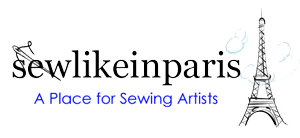

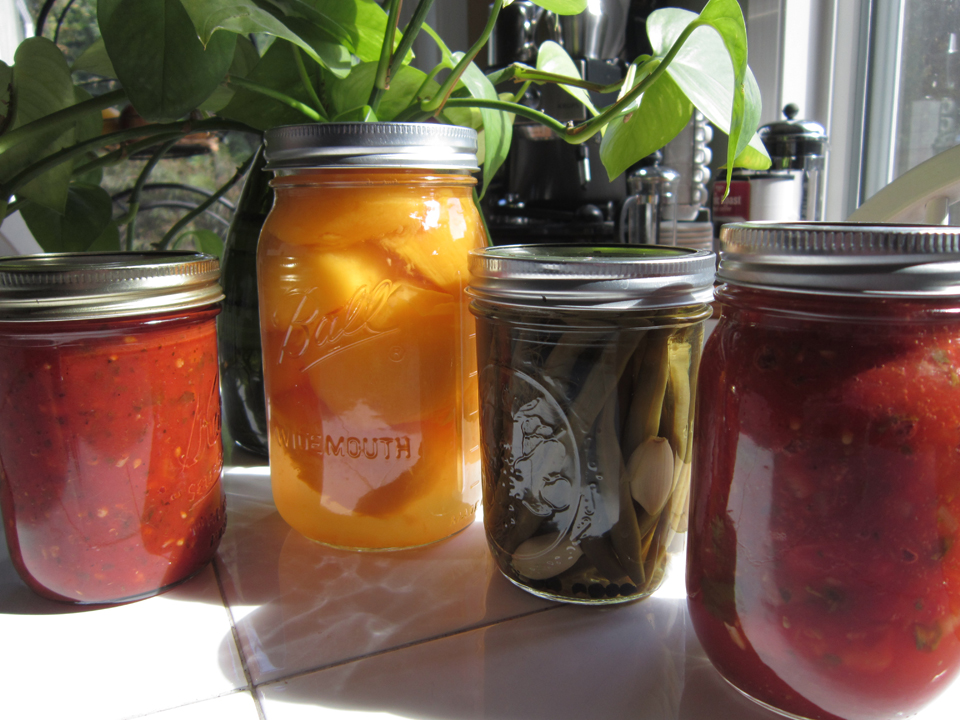

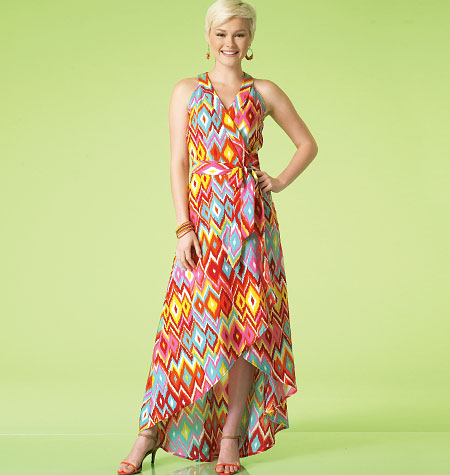
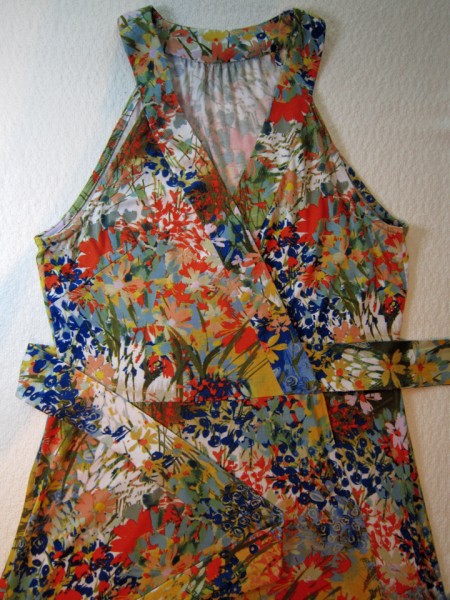
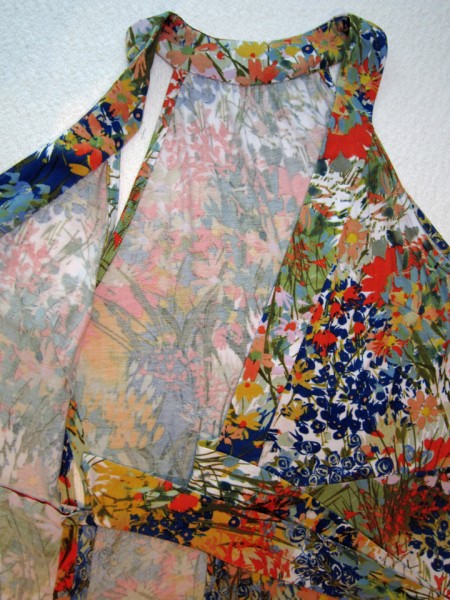
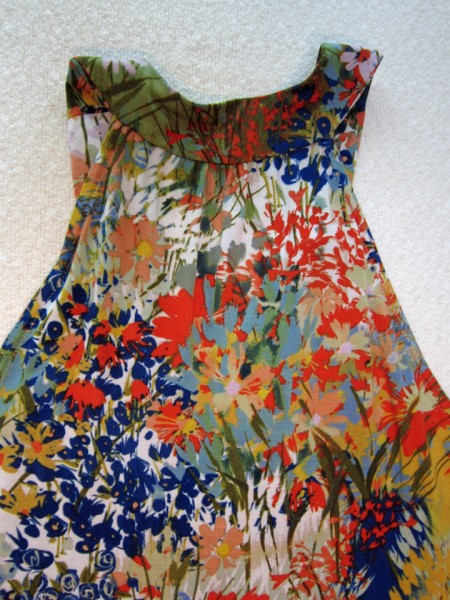
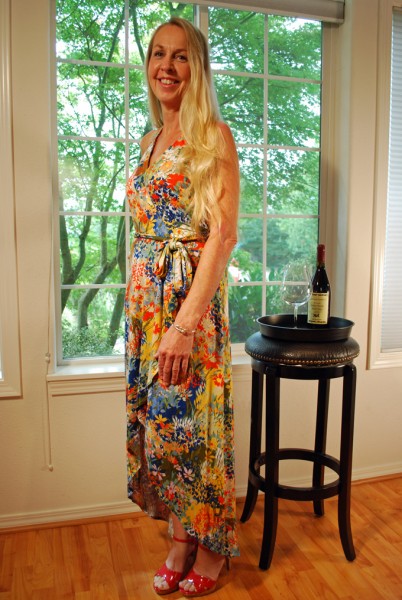
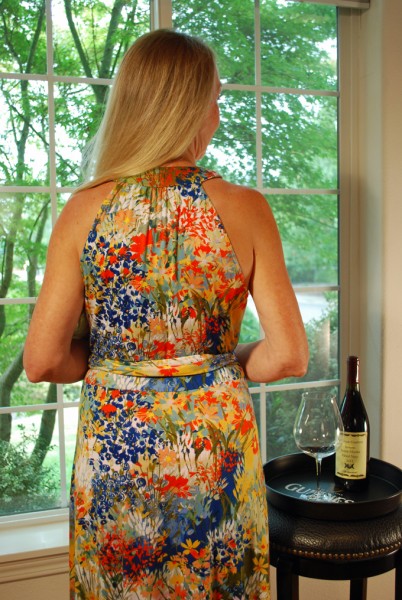
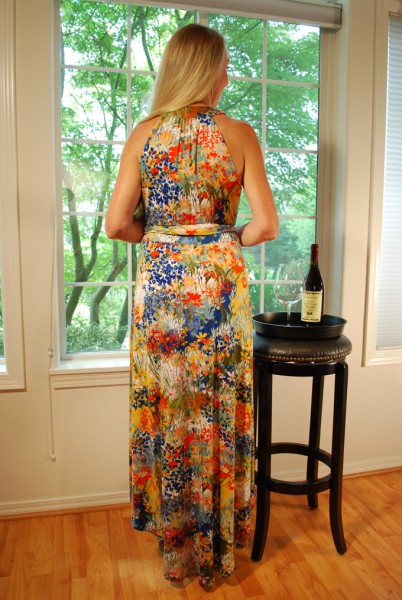
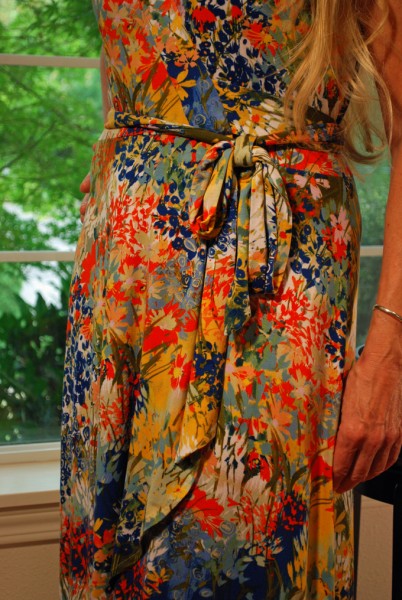
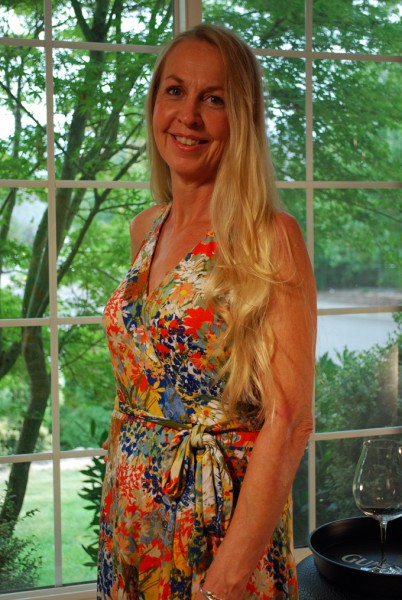
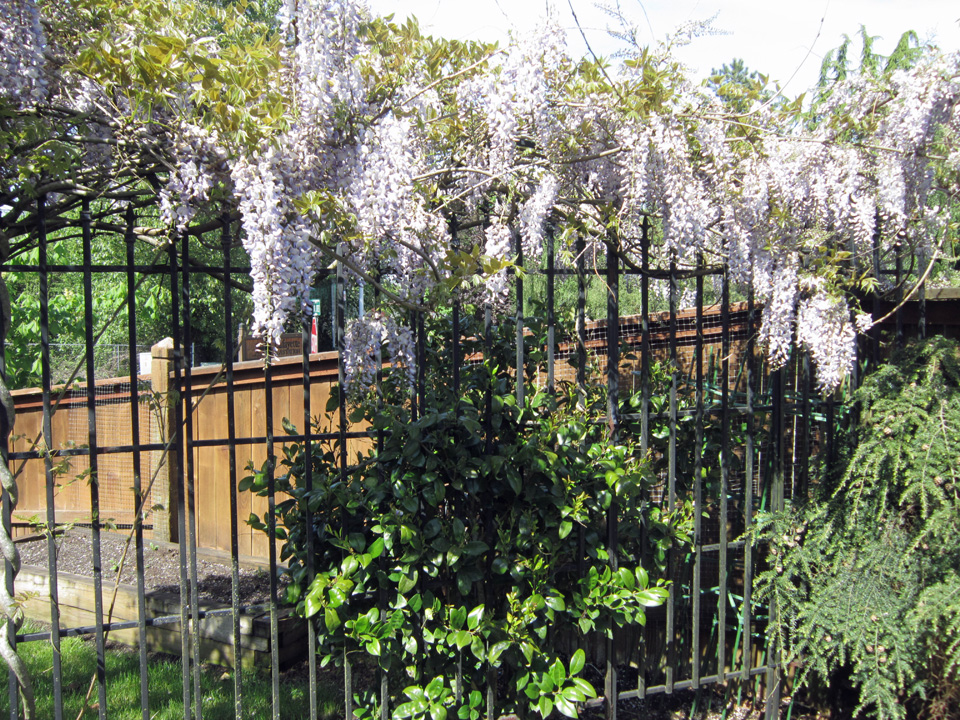
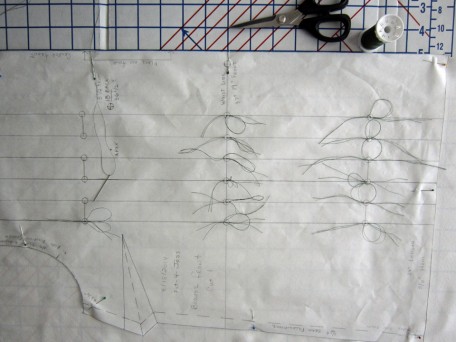
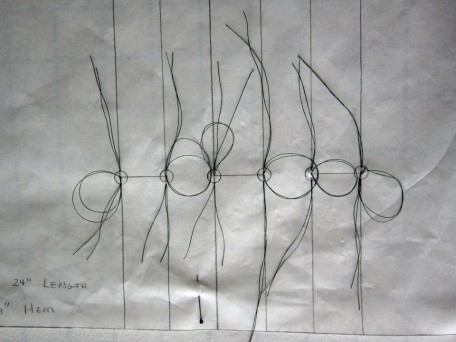
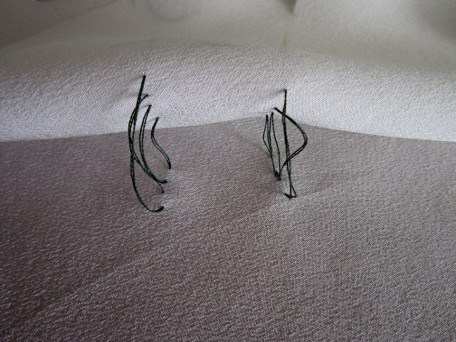
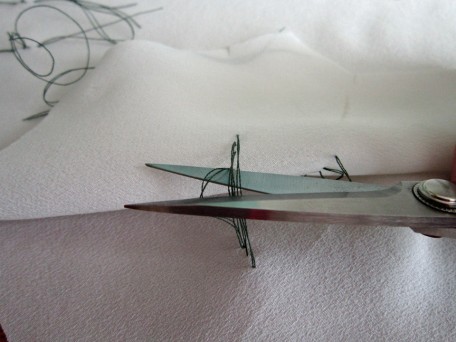
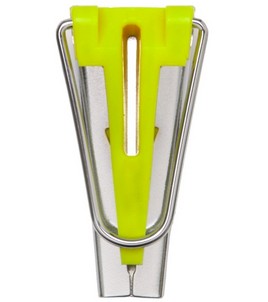
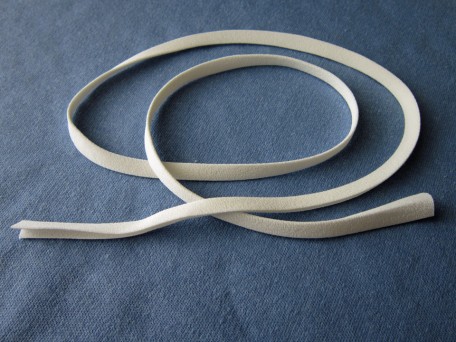
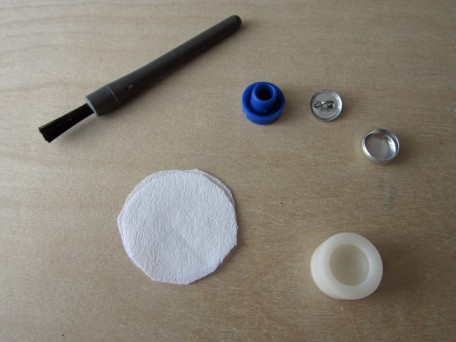
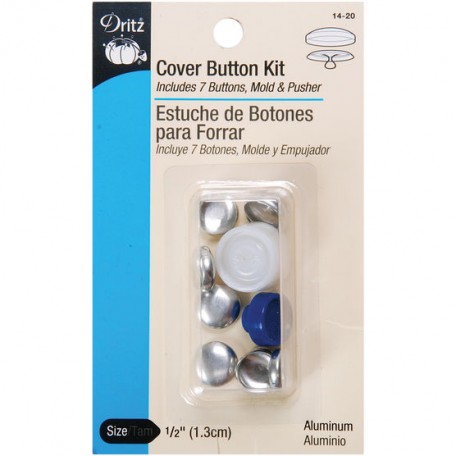
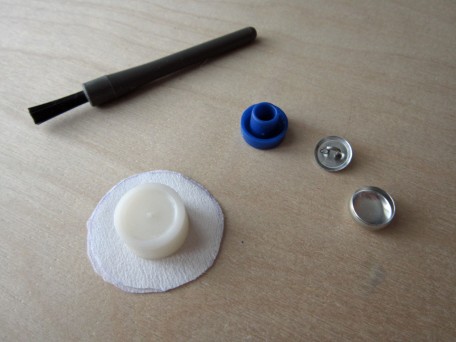
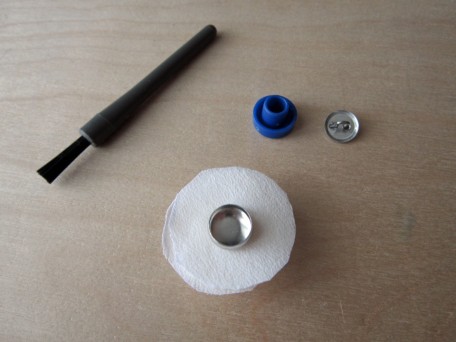
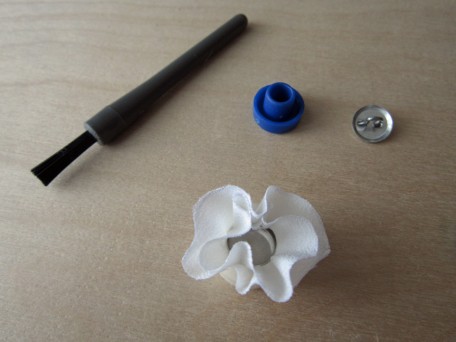
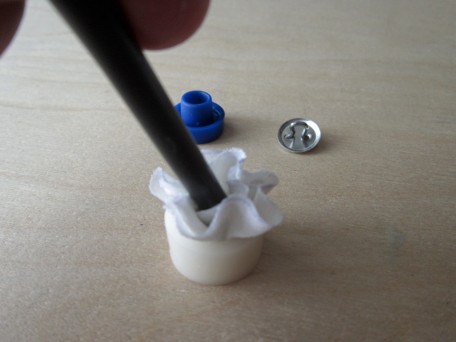
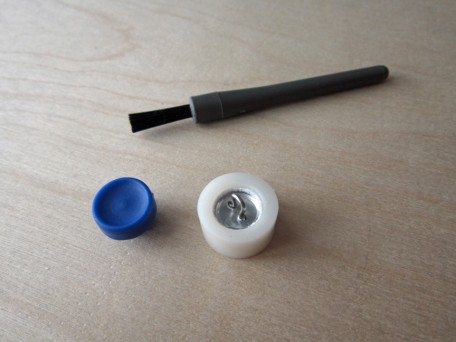
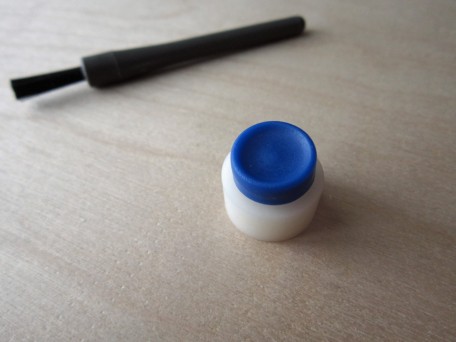
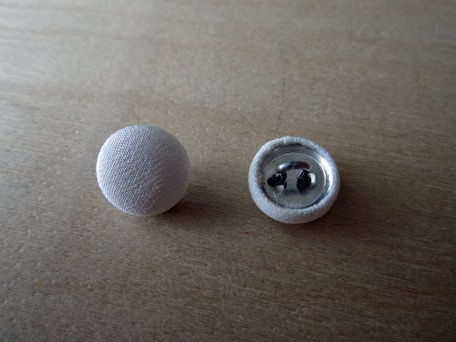
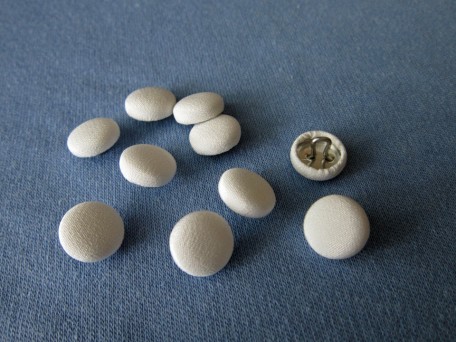
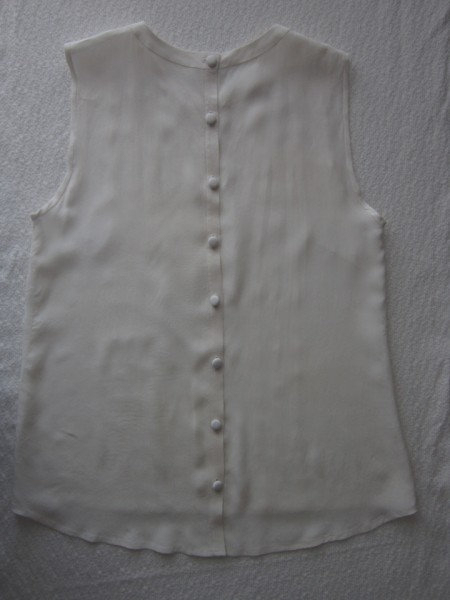
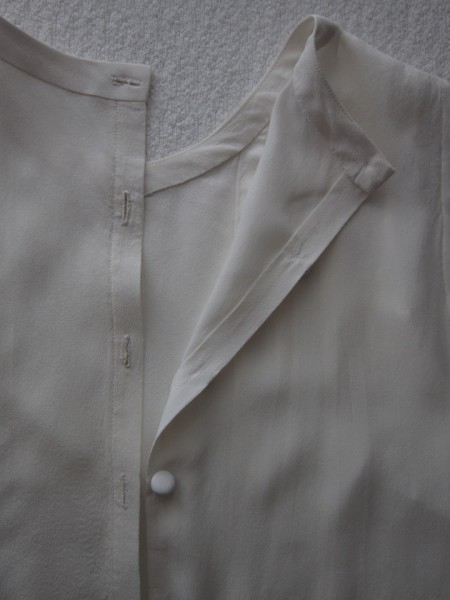
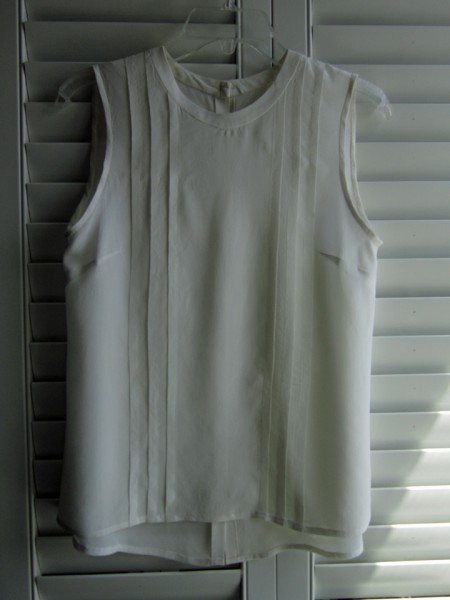
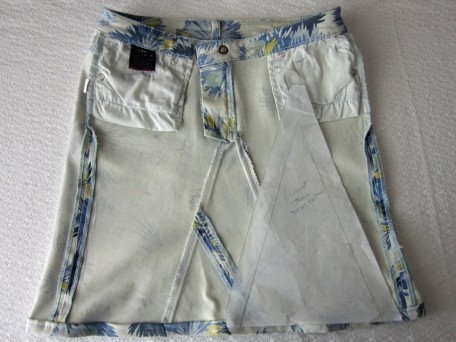
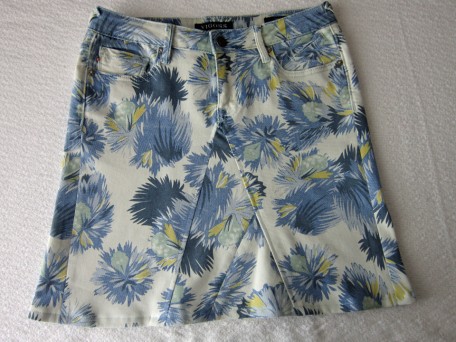
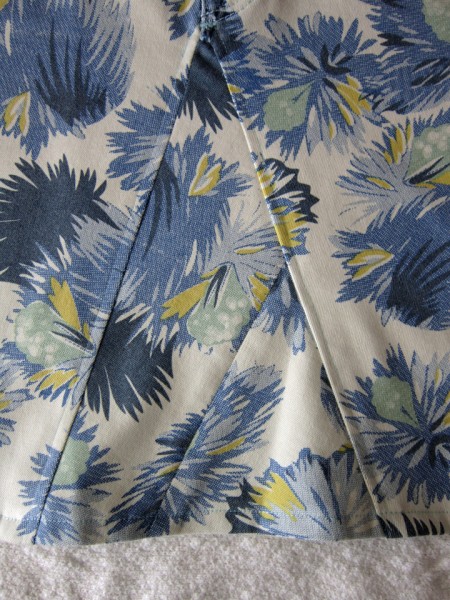
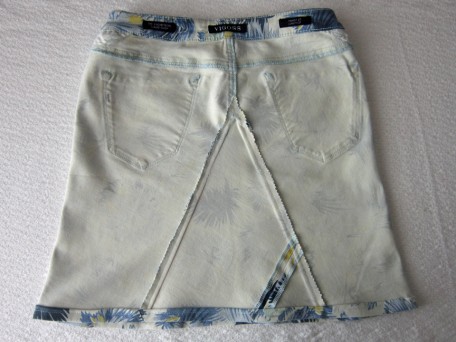
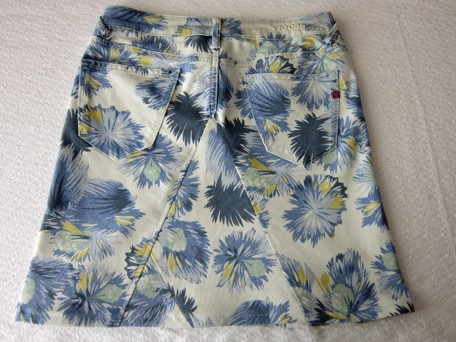
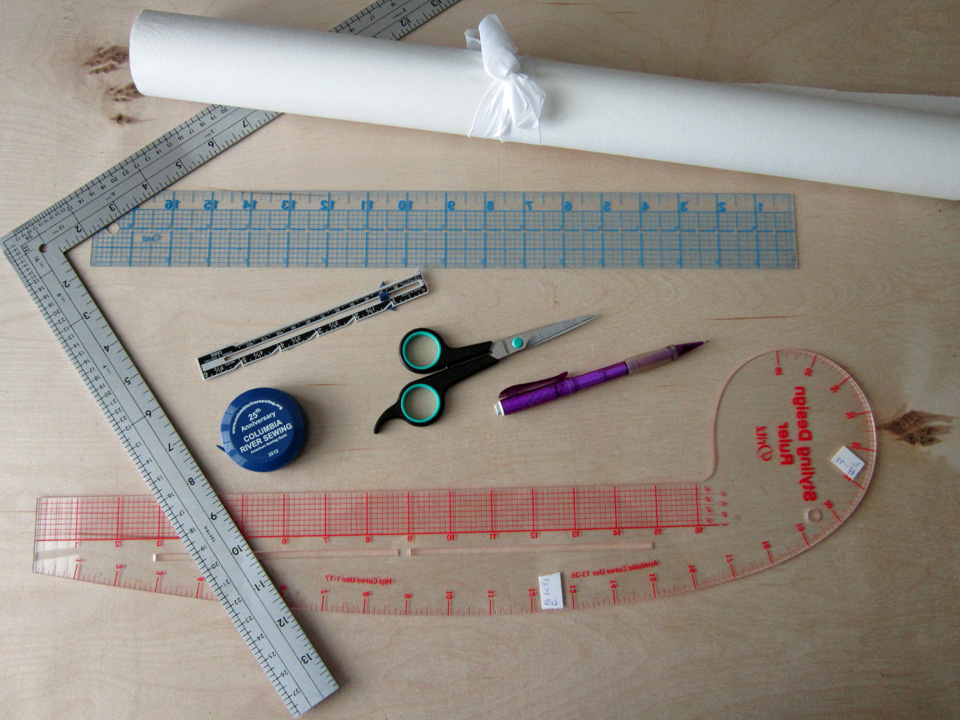
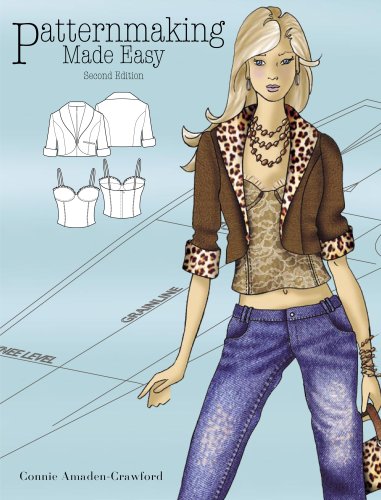
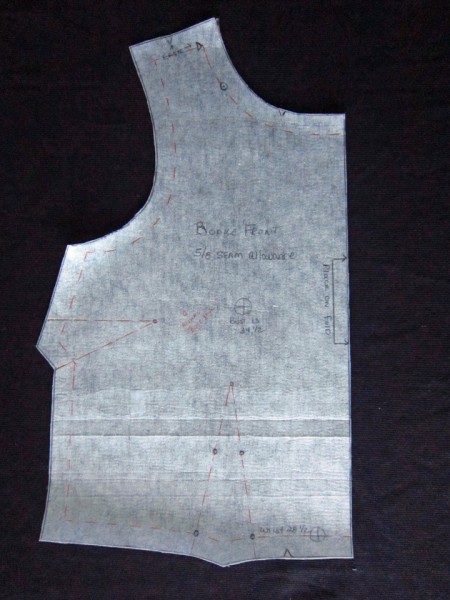
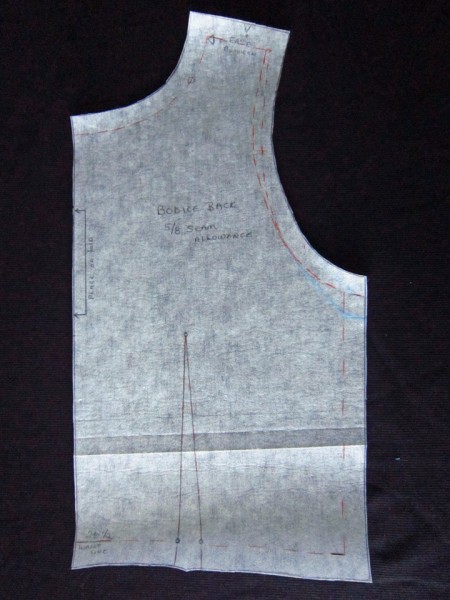


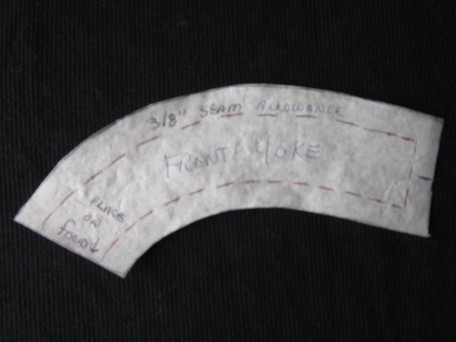
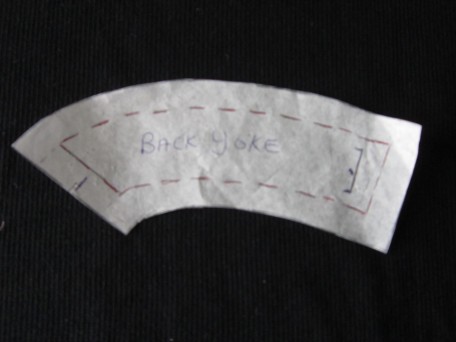
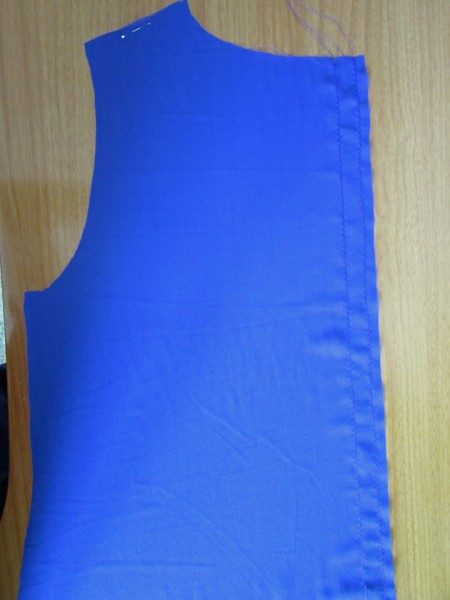
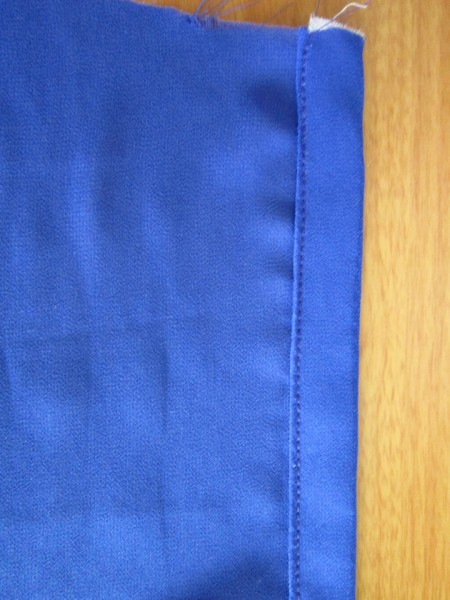
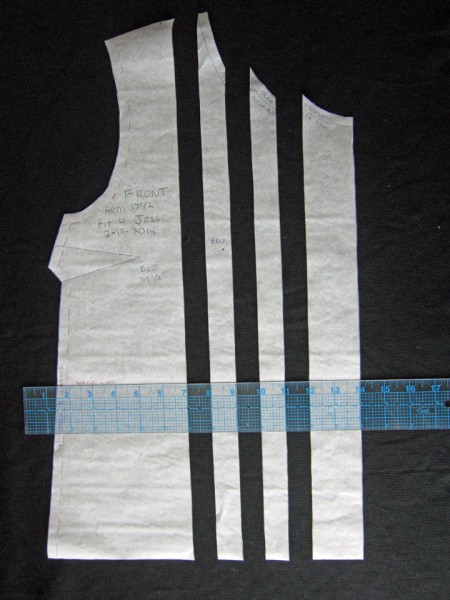
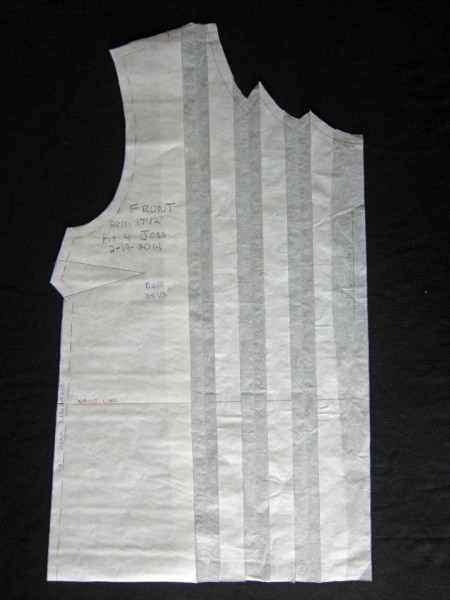
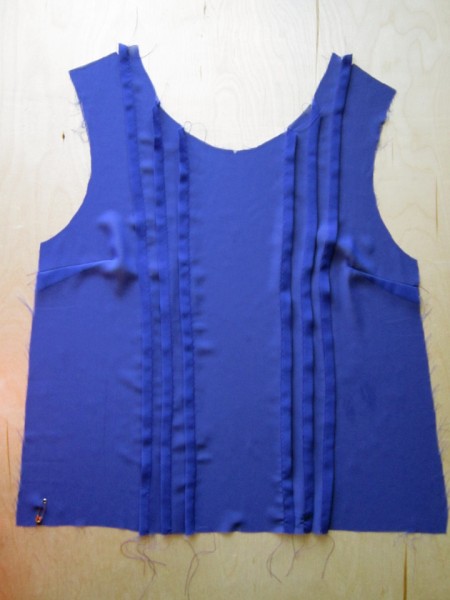
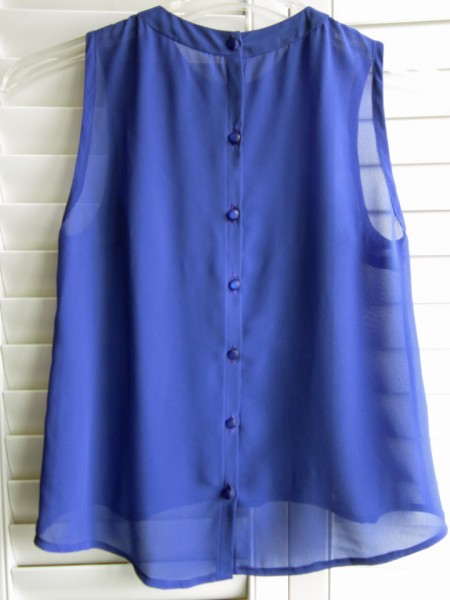

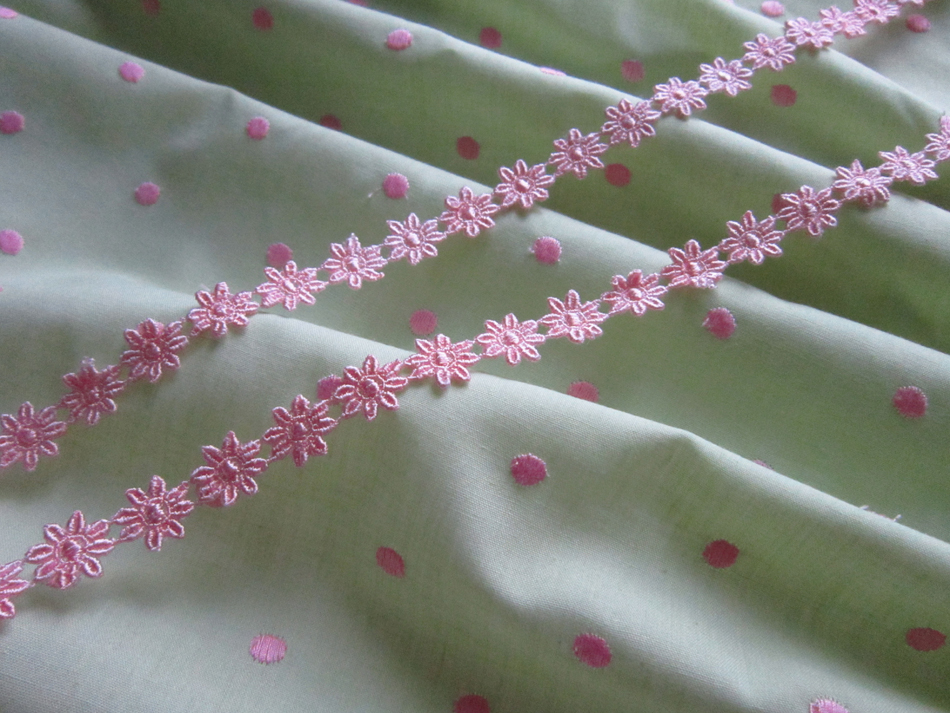
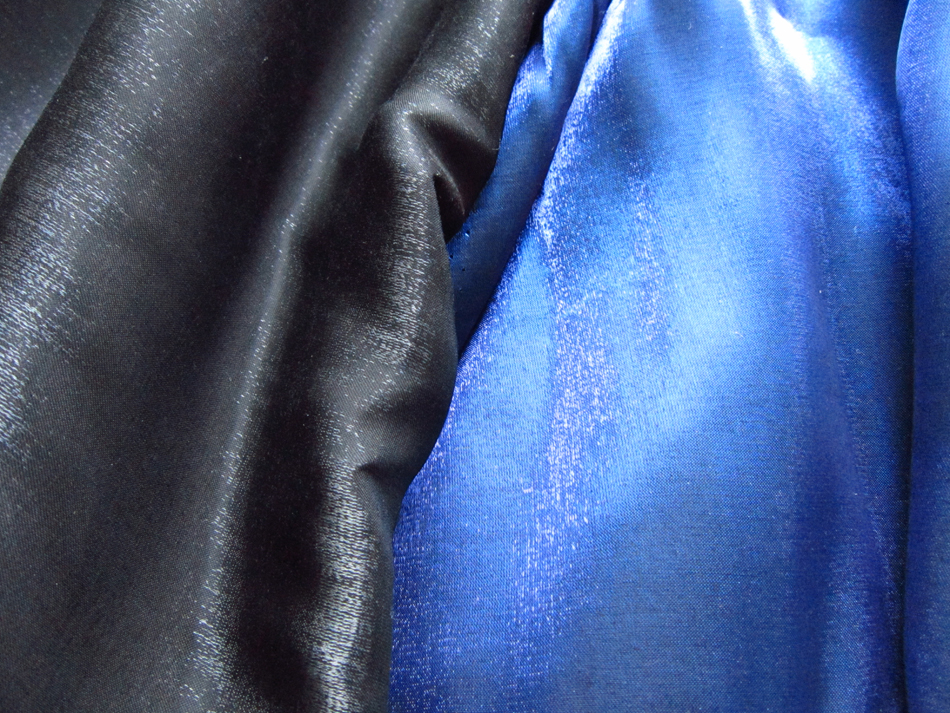

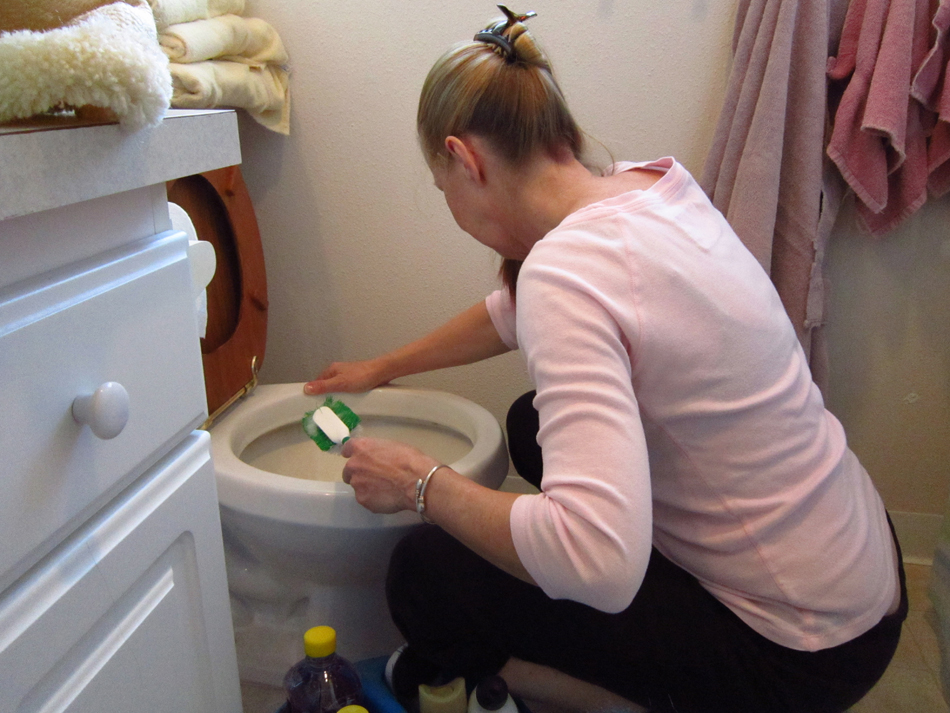
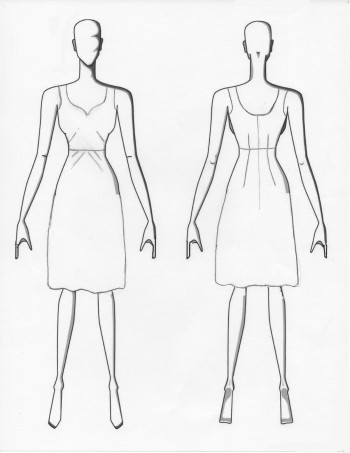
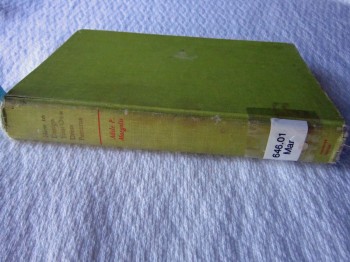
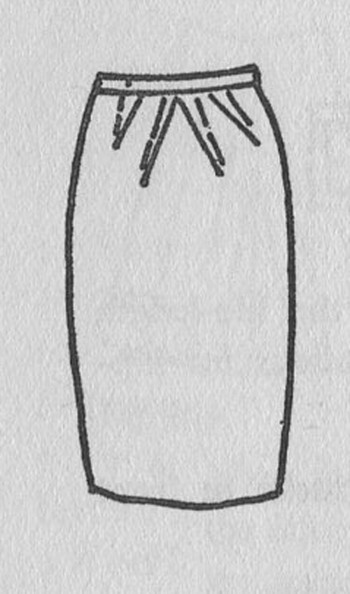
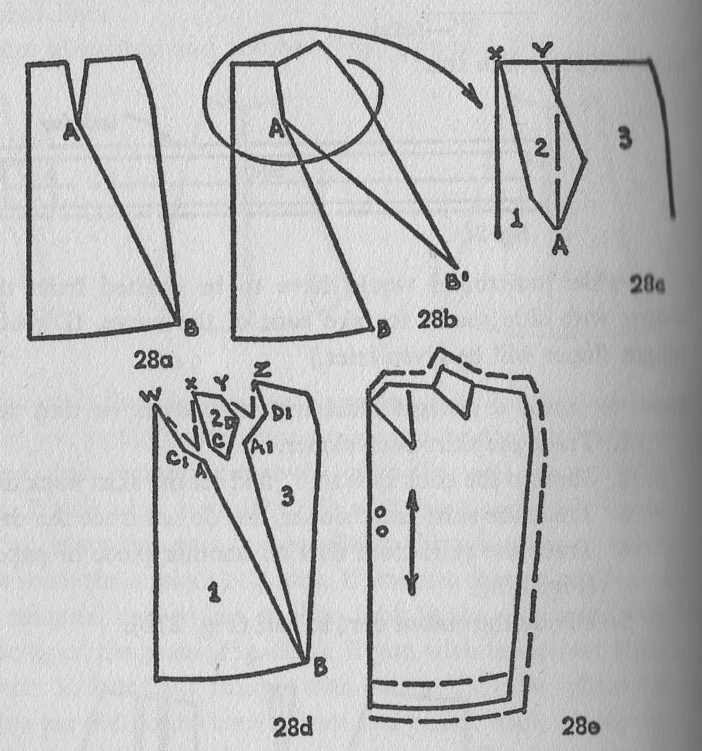
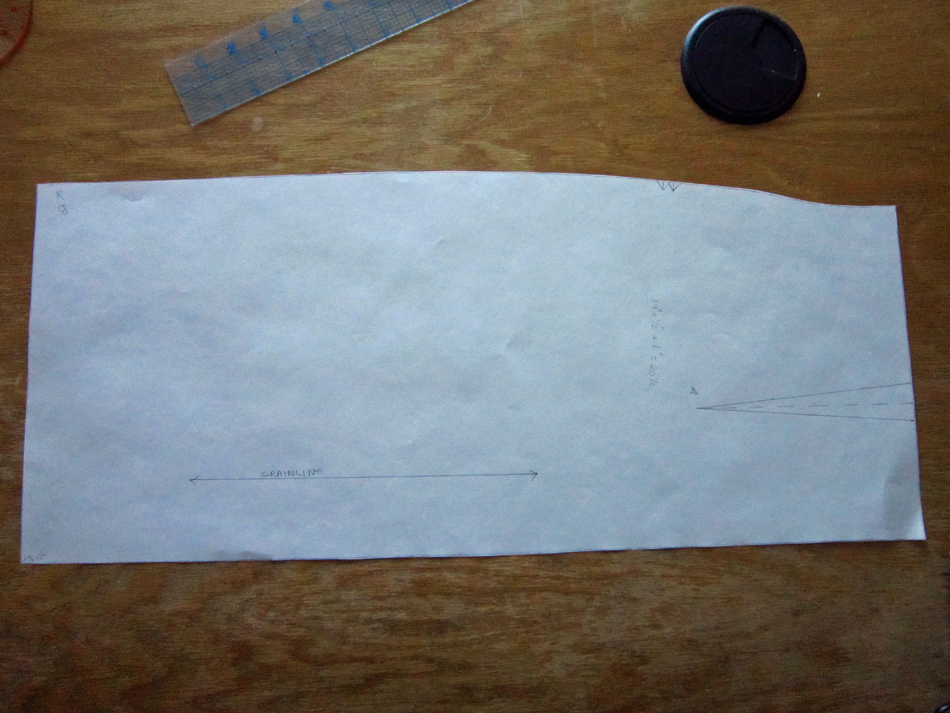
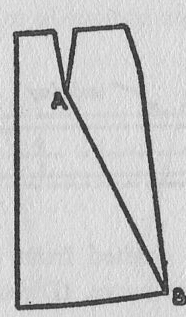
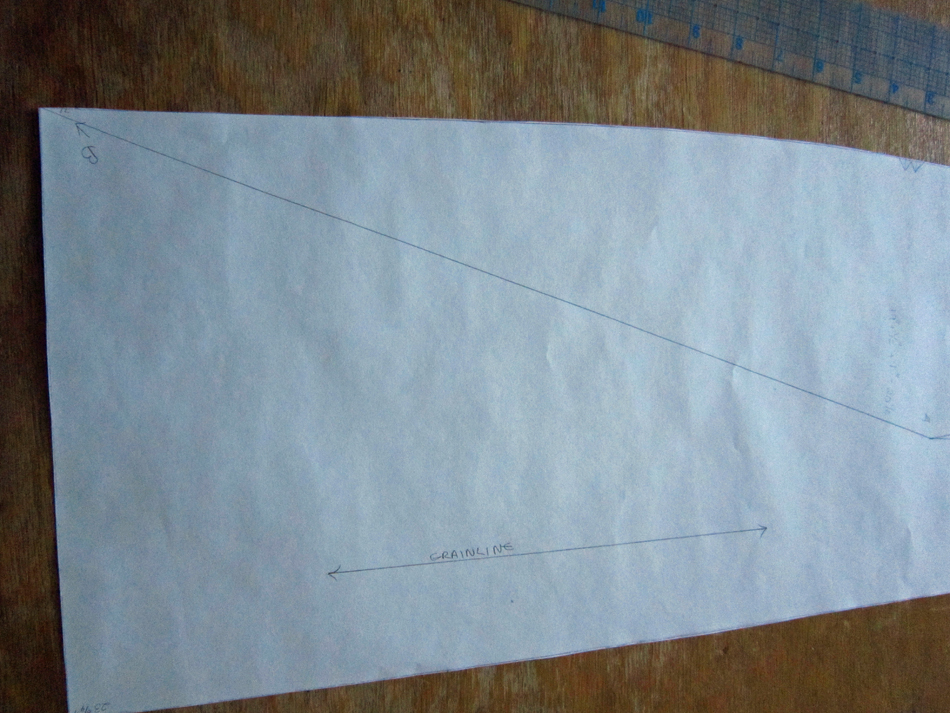
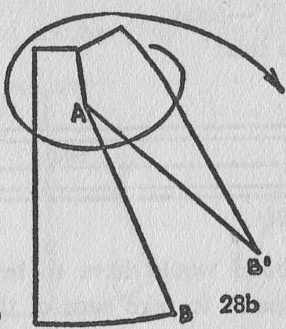
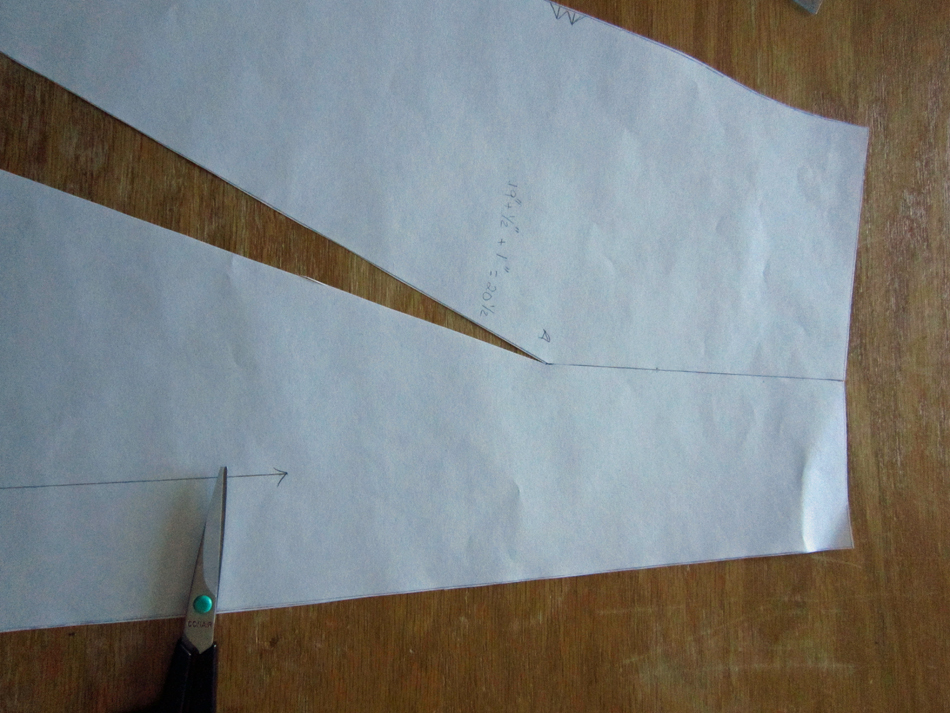
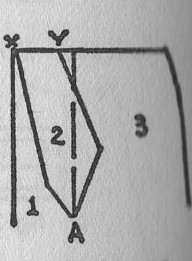
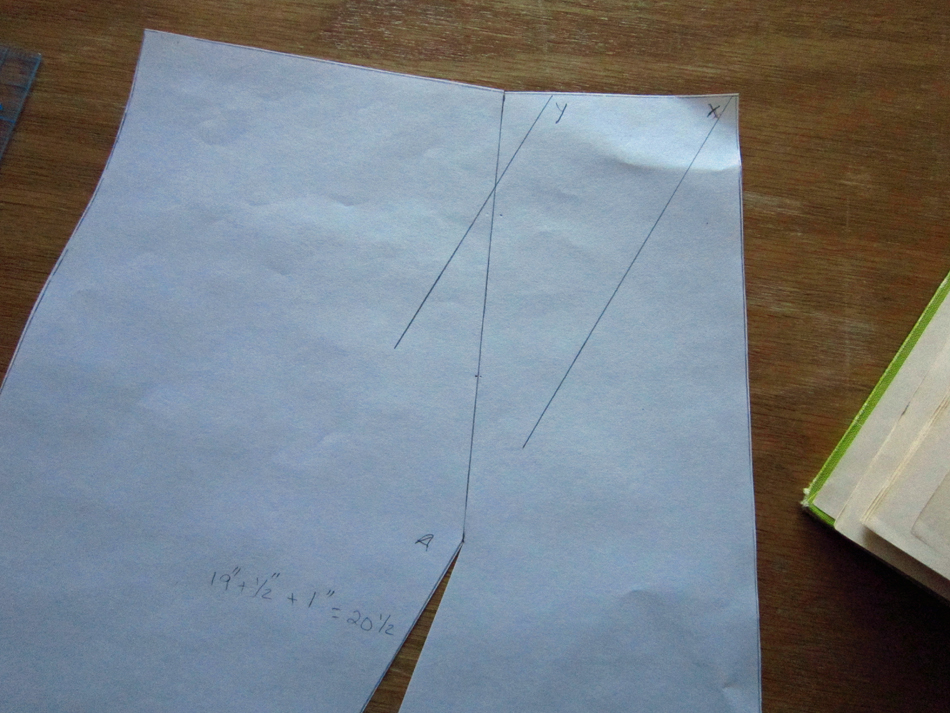
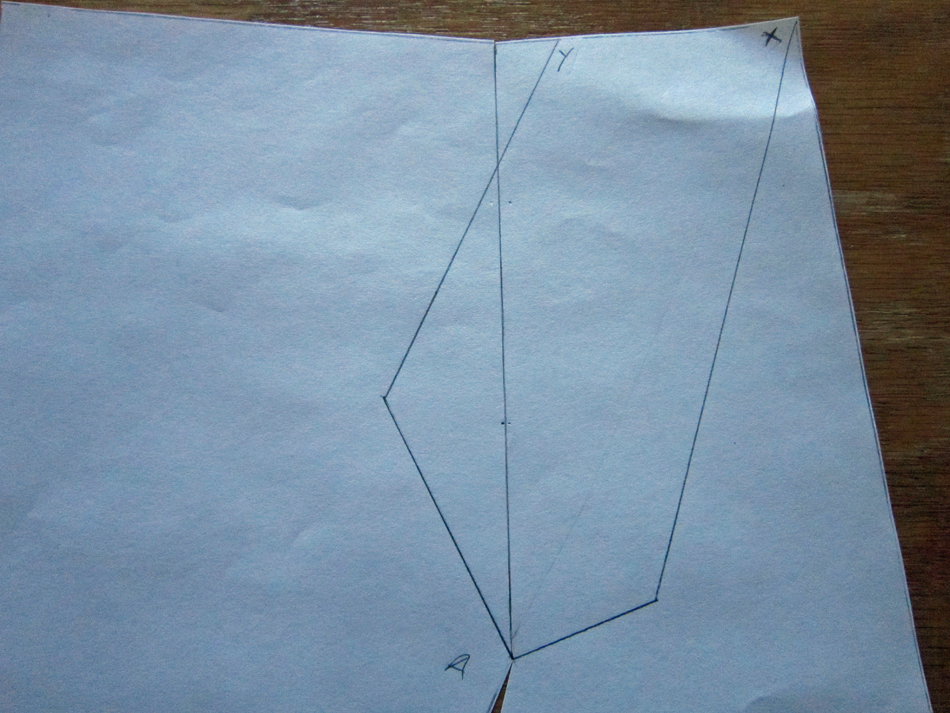
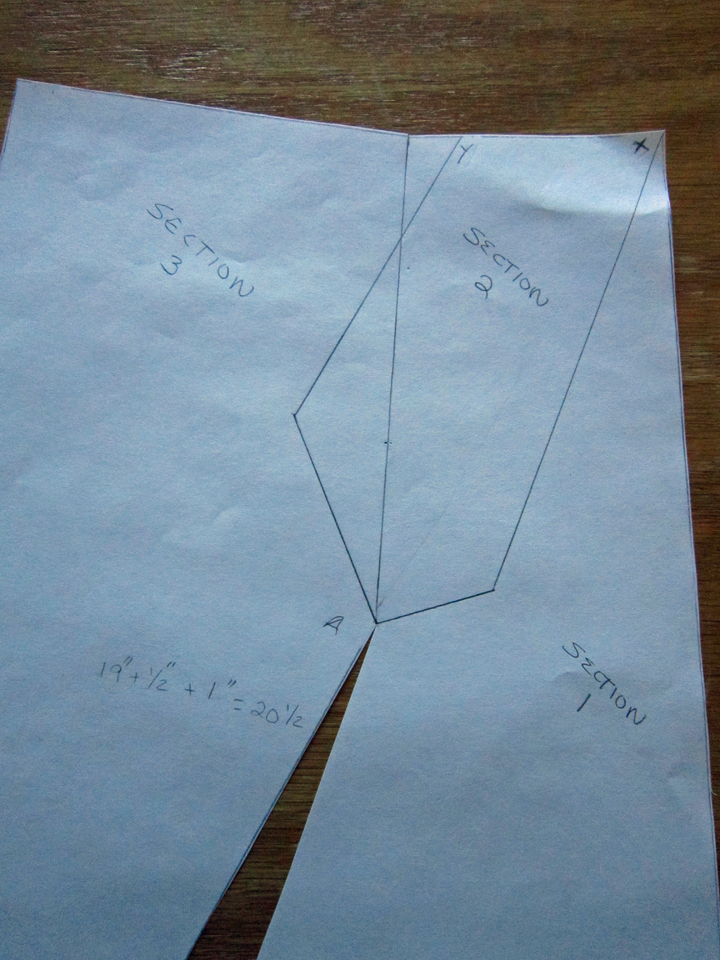
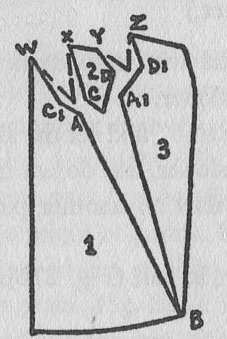
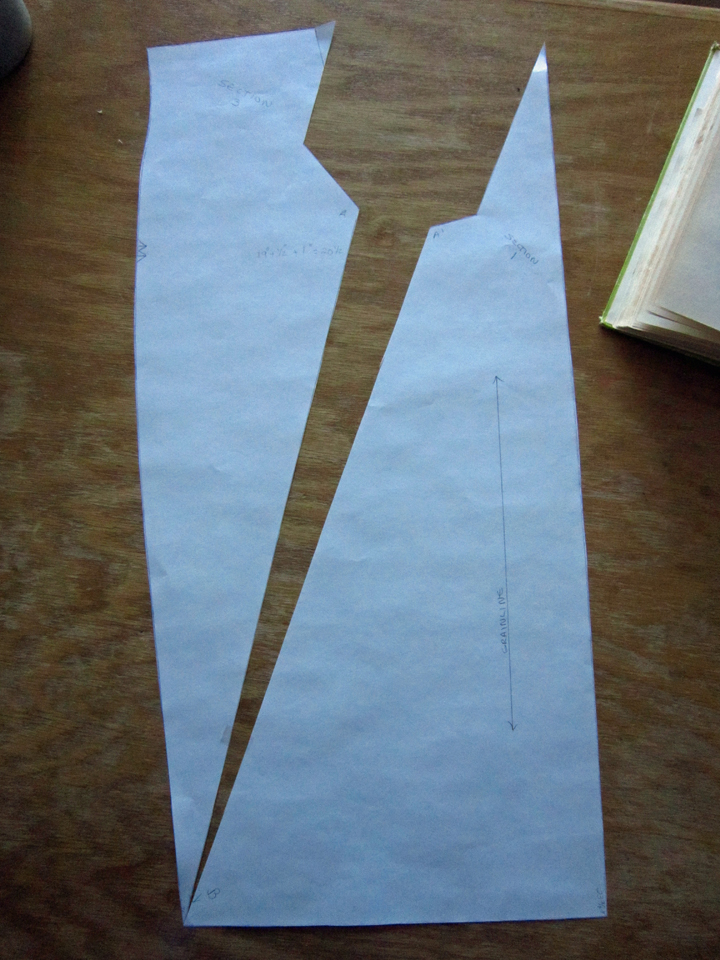
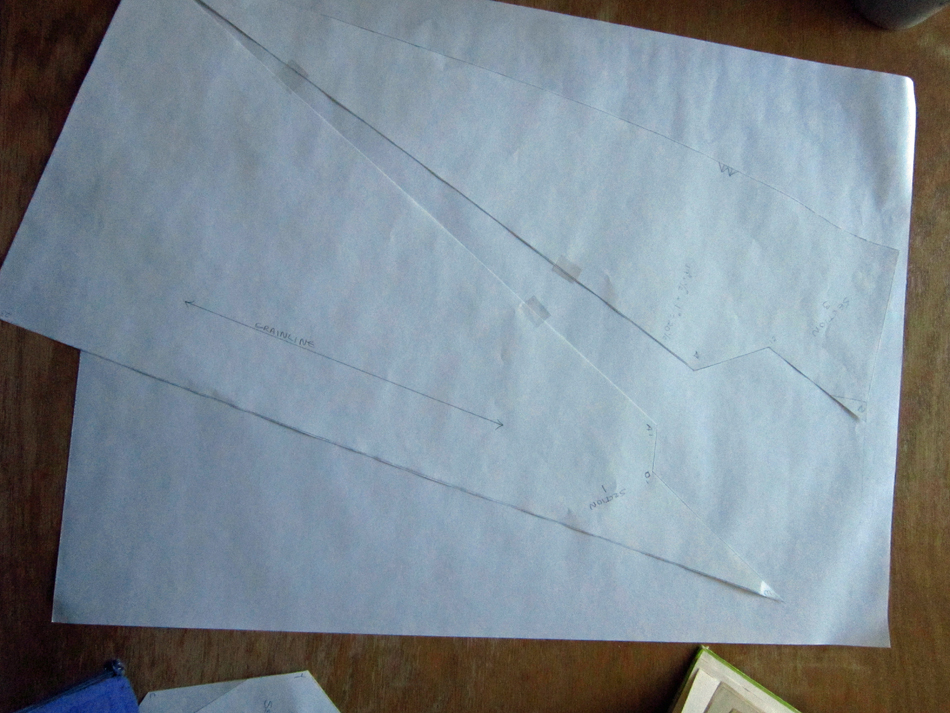
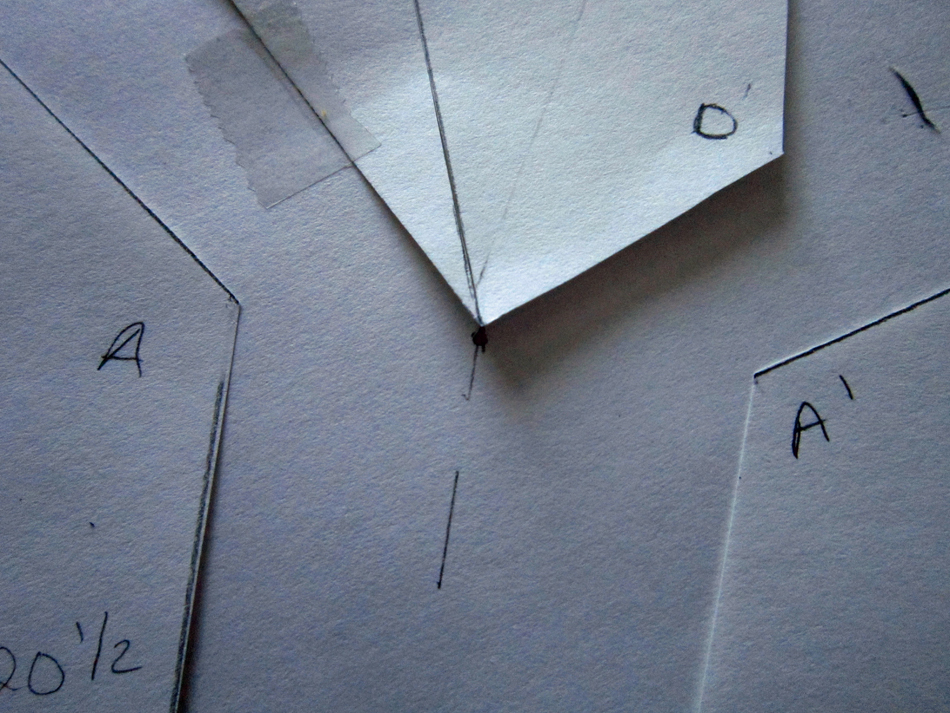
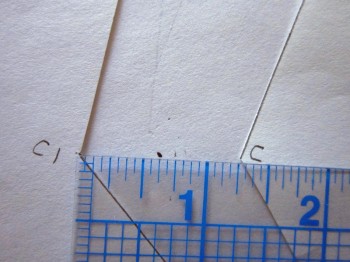
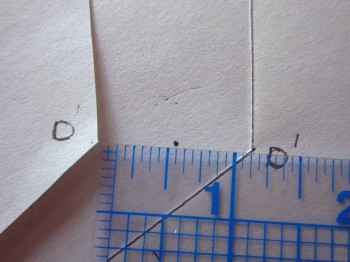
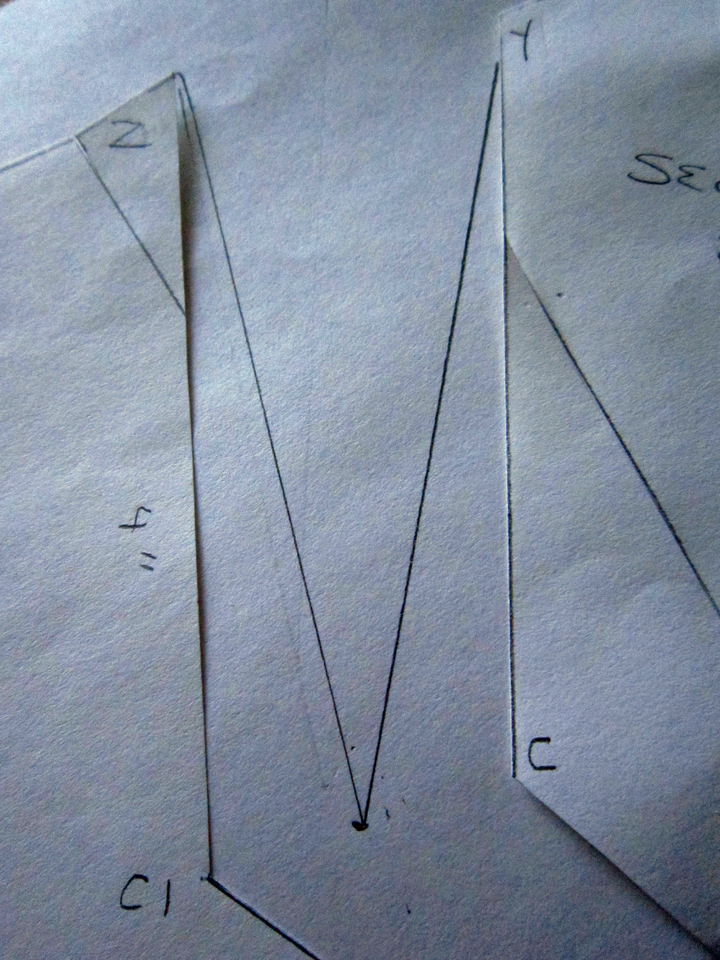
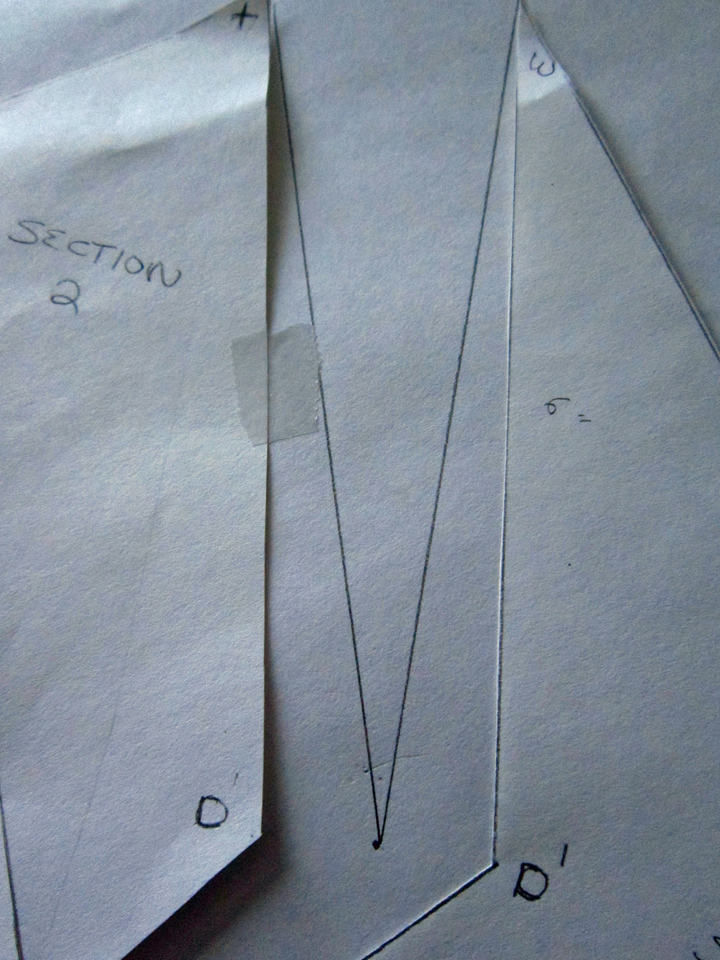
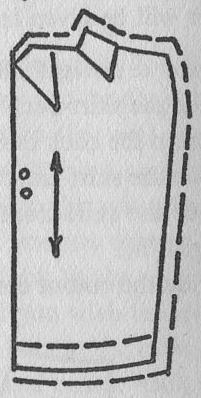
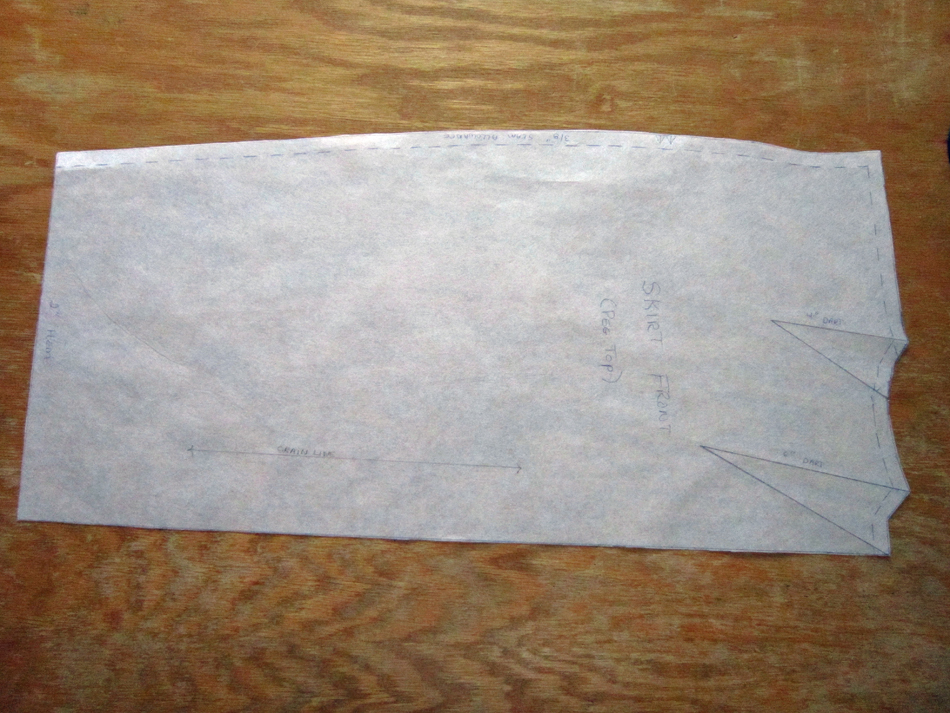
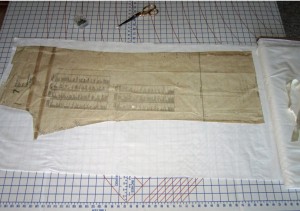
 Portland, Oregon,
Portland, Oregon, 